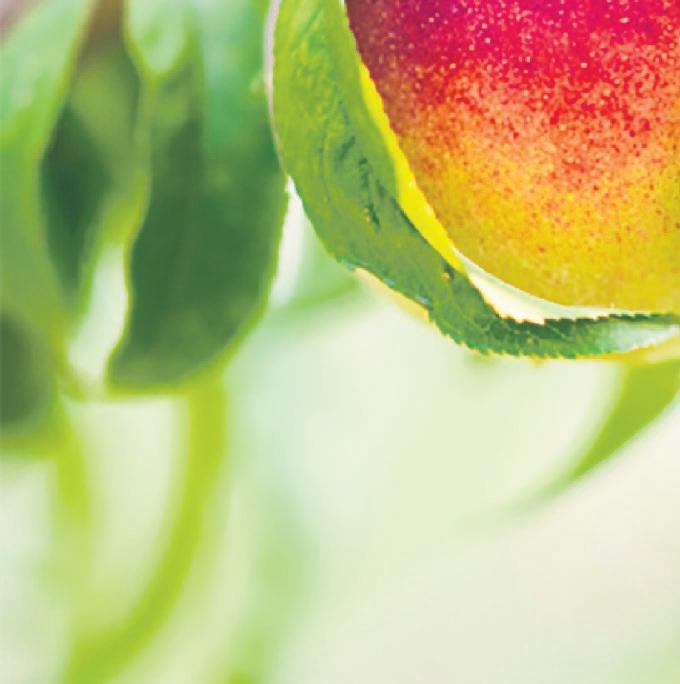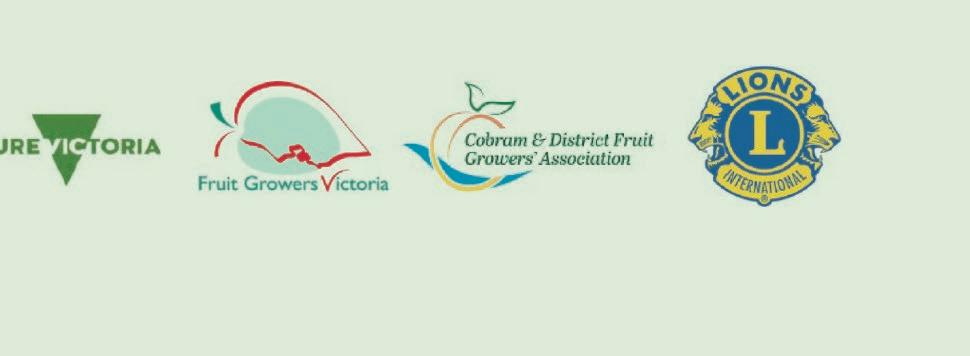NEW FRUIT ON THE BLOCK JUJUBES ARE CERTAINLY ONE OF A KIND
SOWING THE SEEDS OF HEALTH WHEAT VARIETY SATISFIES A HUNGRY MARKET





NEW FRUIT ON THE BLOCK JUJUBES ARE CERTAINLY ONE OF A KIND
SOWING THE SEEDS OF HEALTH WHEAT VARIETY SATISFIES A HUNGRY MARKET







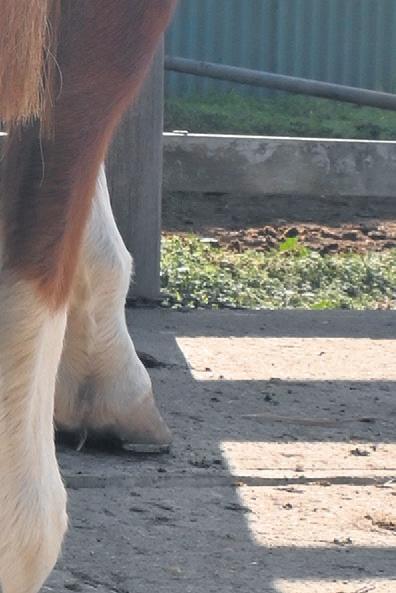

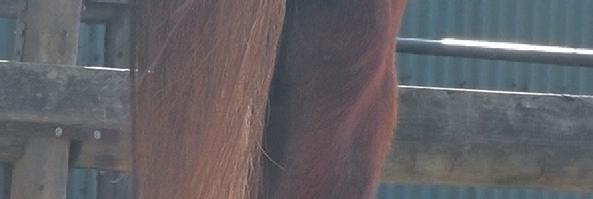

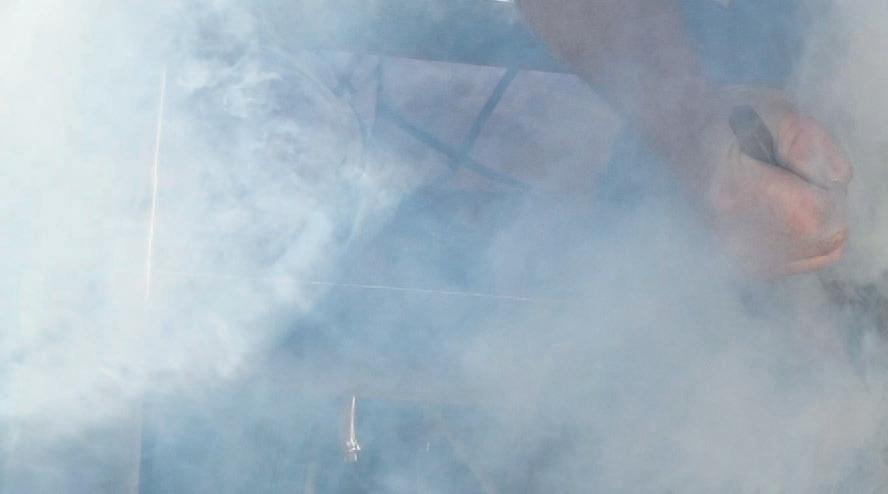
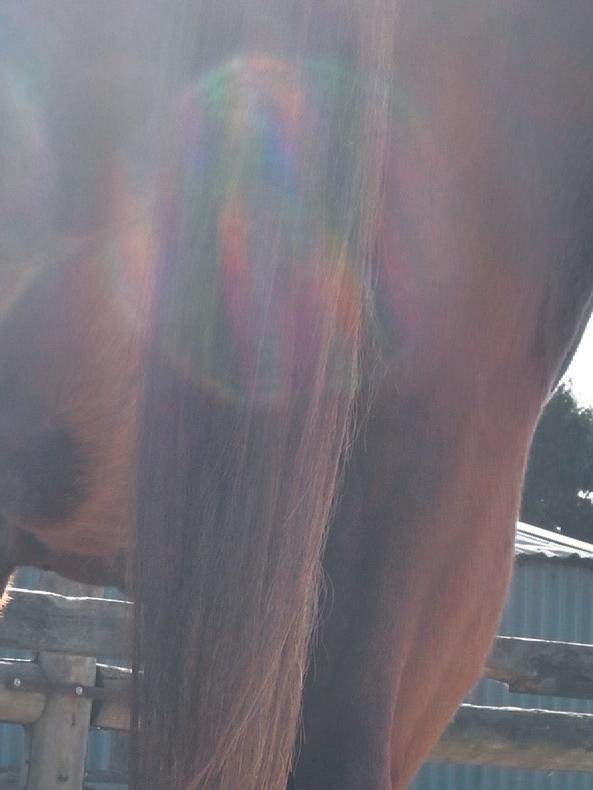




LEARN HOW TO GET THE MOST OUT OF YOUR COMBINE HARVESTER.
Improve the productivity and efficiency of your harvesting operation with the technology built into every S700 combine with our Get Ready for Harvest guide. It features of videos to help you Setup, Optimise, and Automate your combine harvester.


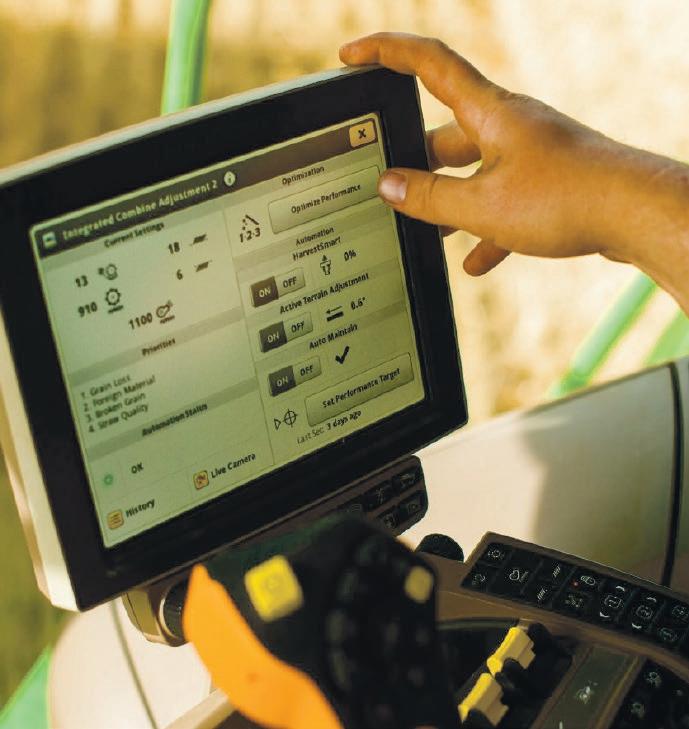
LEARN HOW TO GET THE MOST OUT OF YOUR COMBINE HARVESTER.
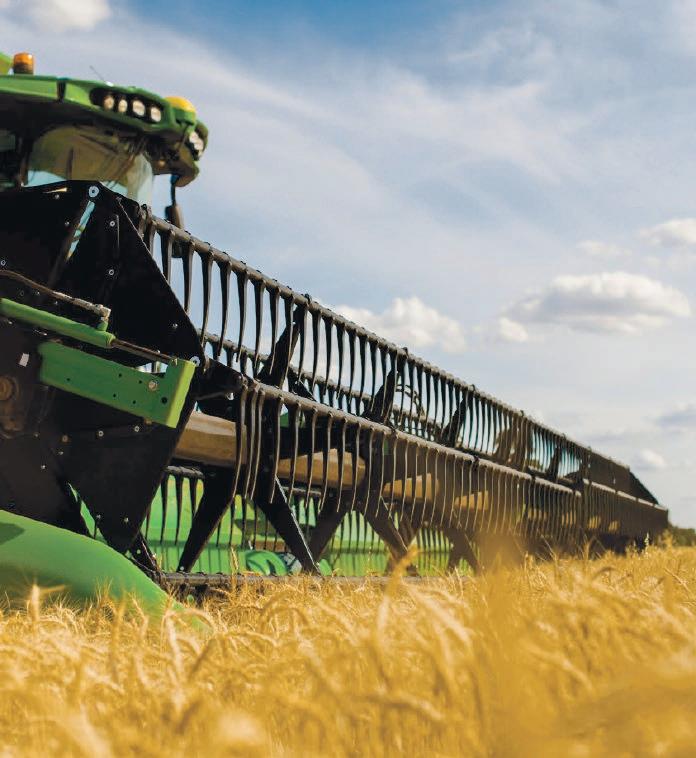
Scan the QR code to learn more or visit JohnDeere.com.au/GetReadyForHarvest
We’re here to help.
Improve the productivity and efficiency of your harvesting operation with the technology built into every S700 combine with our Get Ready for Harvest guide. It features a series of videos to help you Setup, Optimise, and Automate your combine harvester.
Scan the QR code to learn more or visit JohnDeere.com.au/GetReadyForHarvest
We’re here to help.



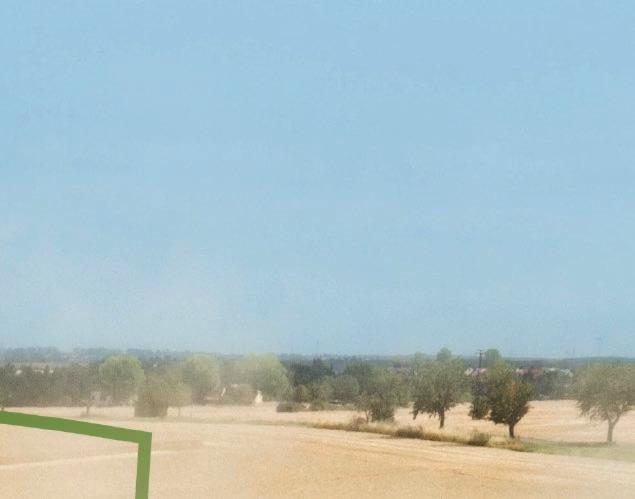

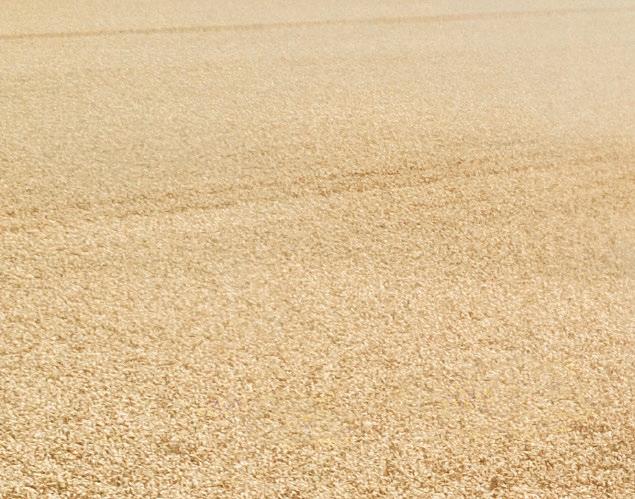
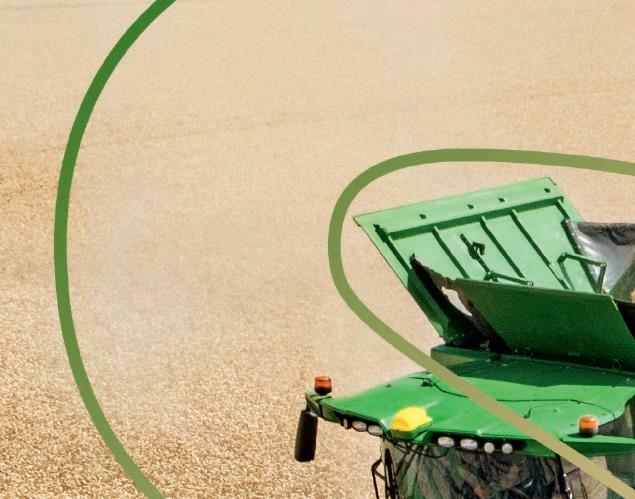











Andy Wilson
Geoff Adams

Sophie Baldwin
Photographers
Andy Wilson

Rechelle Zammit

Sub-editor
Kylie Pogue
Advertising Ashton Still

Peter Wicks Advertising









Ashwini Sidhu
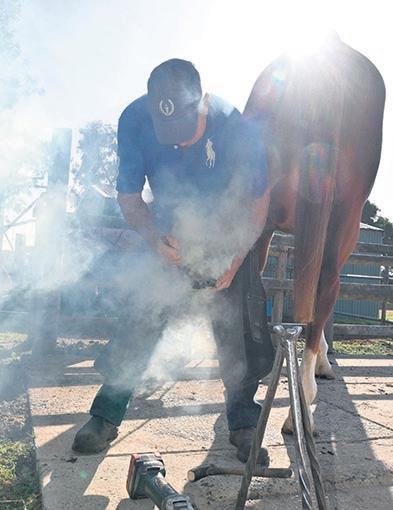







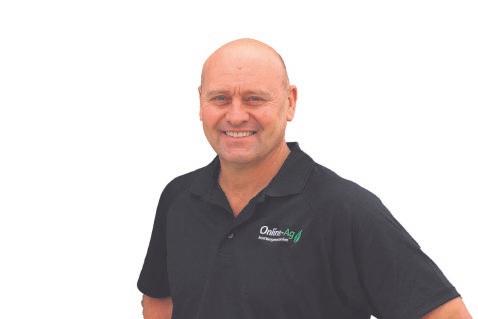




Businesses in regional and rural Australia have prospered in the past year and are well placed to consolidate their gains in the year ahead, NAB’s second annual Regional and Agribusiness Horizons Report shows.
NAB regional and agribusiness executive Khan Horne said the report reflected a recovery from a bust-boom cycle of drought years followed by the COVID-19 pandemic.


“While nobody can deny the cost-of-living pressures across all parts of Australia, we are seeing a new baseline set for sustainable and resilient growth in regional Australia,” Mr Horne said.

“Our customer insights show strong business sentiment in rural and regional locations, reflecting optimism for the future and confidence to tackle emerging challenges.
“The call of the country has cemented itself in Australia, with internal migration from capital cities to the regions continuing at 30 per cent above pre-pandemic rates.
“This has come with massive growth in demand for infrastructure and is reflected in an uptick in demand for credit and corresponding investment into infrastructure projects.”
The NAB Regional and Agribusiness Horizons Report shows in 2022:
• Demand for credit was up 6.7 per cent. Australian regional businesses

are focused on long-term growth and short-term opportunities and are investing at a higher rate than the rest of the economy.
• Commodity prices may have come off their superheated tops, but a good season in 2022 and another projected for 2023 saw agricultural lending up 14.6 per cent for the 12 months from March 2022 to March 2023, compared to 10.7 per cent for all businesses.
• Demand for equipment finance was up 47 per cent on pre-pandemic levels, reflecting strong customer appetite for new and used equipment.
• Deposit volumes for regional businesses grew by three per cent and agricultural deposit volumes grew by 8.1 per cent. Farm Management Deposits (FMDs) were

up 35 per cent.
• Farmland values are set to stabilise in the year ahead after sustained historic levels of growth.
Transactions in the $15 million to $25 million range are likely to be most common, with large-scale family owner-operators again the most active buyers.
The same research also shows labour shortages are still top-ofmind for regional and agribusiness customers.
“Our bankers report that availability of labour is the top concern for regional employers, with wage costs not far behind,” Mr Horne said.
“Despite the growth in regional populations, the skilled and unskilled farm labour markets remain tight.”




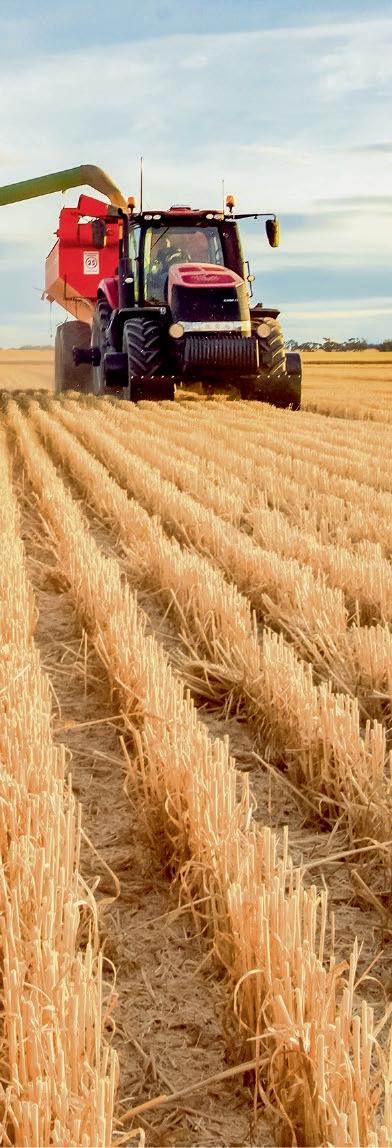
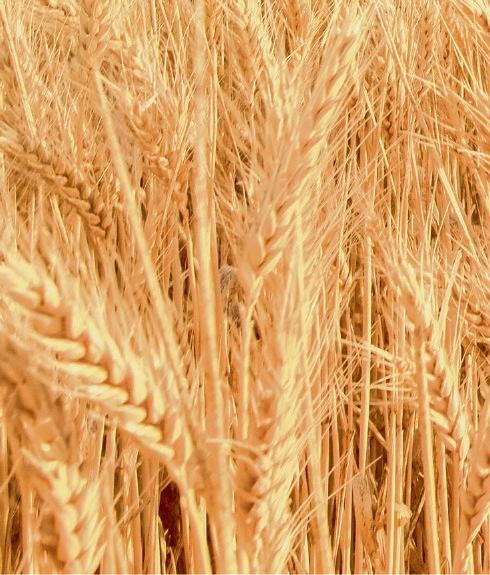
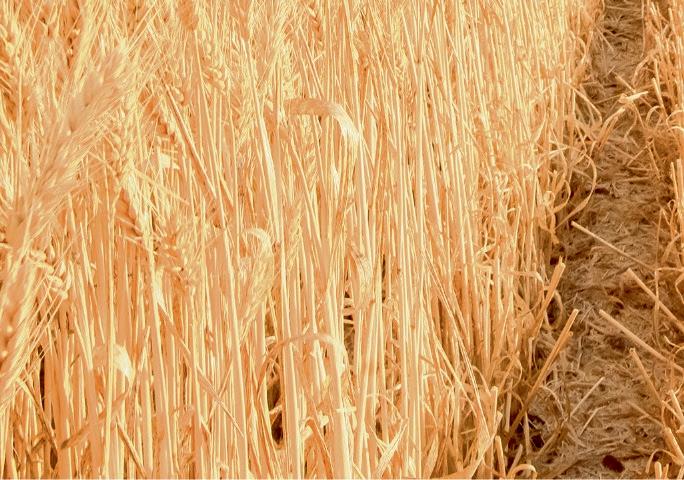


Coming to grips with the jujube fruit can have you going in circles.
“It’s really like nothing else.”
This is the most common response of consumers and fruit lovers when they first bite into a jujube fruit.
“In terms of taste, it’s in between an apple and a date,” Seeka growers general manager Jonathan van Popering said as he tours some of the 16,000 jujube trees he has planted at Bunbartha.

“And structurally, the fruit is similar to an olive.”
If that doesn’t confuse the firsttime sampler, then the second bite answers the quandary by returning to the start.
Jujubes really are like nothing else.
They have a foamy texture and although they don’t produce a drop of juice, they are not dry and are quite sweet.

The soft green coloured skin changes to brown after removal from refrigeration, but this can be misleading as it indicates they have ripened with an even better taste.
Jonathan sources the trees from a nursery in the South Australian country town of Cambrai where he has placed a large order for the near future.

“They asked us how many we wanted, so then it was a case of us saying ‘well, how many can you grow?’”
The orchard hopes to reach 40,000 trees over the next two years.

Ziziphus jujuba is a member of the buckthorn family of plants and originates from the middle and lower reaches of China’s Yellow River where it was first cultivated more than 9000 years ago.
Since then, the plant has moved across Asia to as far as Russia and western Africa.
In Chinese herbal medicine, the fruit is used to treat irritability, insomnia and heart conditions.
China produces 40 per cent of global supply.
Very little jujube is grown commercially in Australia.
An added advantage to growing the trees is the ease with which they can be managed, and Jonathan lists off the farmer-friendly traits one by one.
The trees only require a light prune to maintain a basic shape, and in fact they self-prune in winter due to the fruit forming on what is basically a long compound leaf which sheds itself when cold weather arrives.
The trees are very hardy, salt tolerant, do well in dry conditions as well as in very wet weather.

These are attributes that please Jonathan, and he doesn’t stop there.
“During last year’s floods some were underwater for two months, but we
only lost a few.
“The beds are mounded to protect them from flood, but are not really needed for drainage normally.”
Adding to the seemingly ‘perfect behaviour’ of the trees, the fruit is not susceptible to any of nature’s antagonists.
“Part of the appeal of growing jujubes is that there’s not a lot of issues with pathogens and insects, at least not that we know of.
“It can be susceptible to fruit fly, but we have not seen that ourselves.”
Topping the wish list of the ideal fruit involved a little bit of luck.
“The orchard survived the three hail events of last summer because the fruit were young and small.”
It is this lack of susceptibility, successful use of weed control matting and all-round hardiness that means the orchard has very low inputs until harvest time.
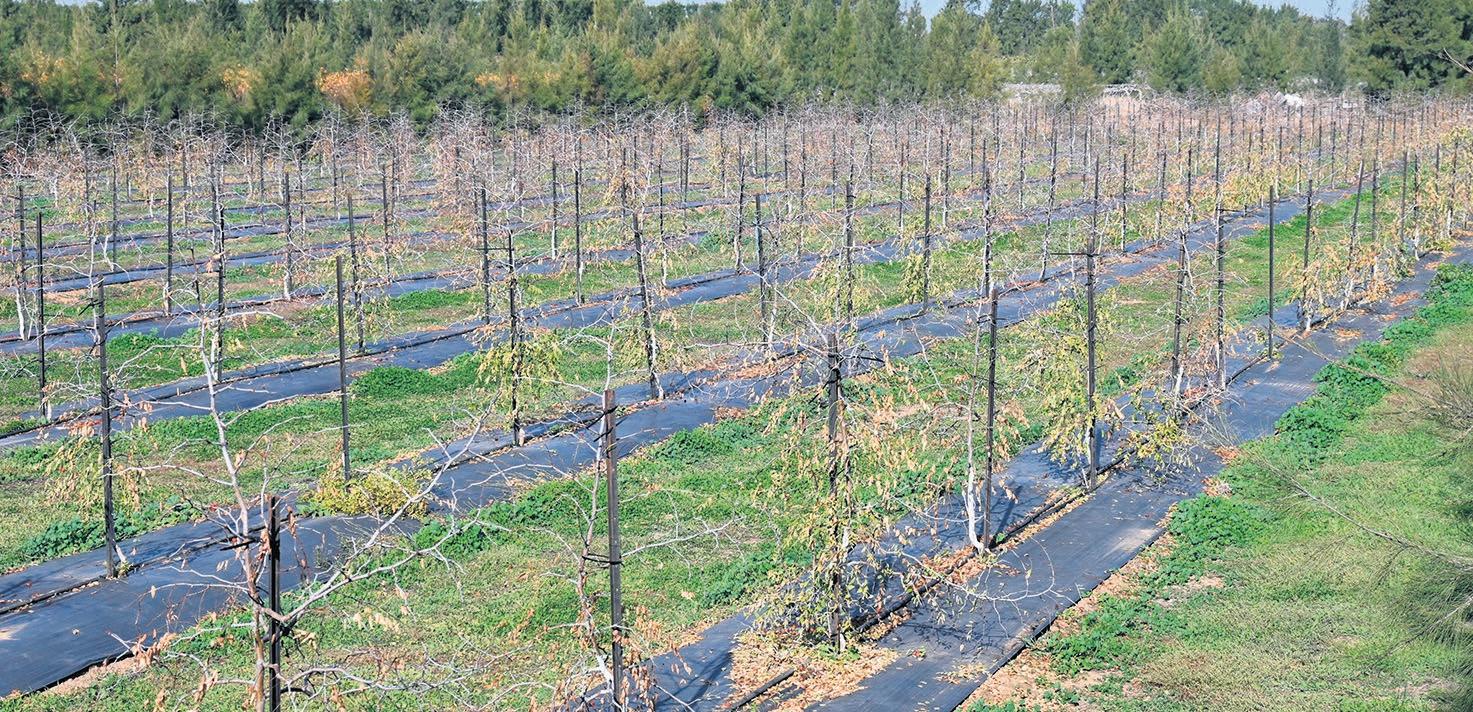

“The biggest cost by far is harvesting; we can spend up to $30,000 per hectare for picking labour,” Jonathan said.
Although the flower of the jujube does not require bees for pollination, the occurrence of some fruit with poorly developed seeds has Jonathan preparing for the installation of beehives this year.
Seeka boasts being one of the largest kiwi fruit farms in Australia, with its plantation covering 168 hectares.
In addition, the company grows pears, nashis and plumbs.
Due to the jujube plantations being so young, the crop has been sold wholesale to Sydney markets, with Jonathan looking at trialling some market testing next year.
The company harvested more than six tons last season from two-year-old trees using around 100 pickers.
“There is that potential to export to China,” he said with enthusiasm.
“But we will also look at developing a local consumer market.”
Adding to the fruit’s charm is its ability to change into a completely different product when dried.
The flavour becomes concentrated as the fruit caramelises and becomes sweeter.
“At a glance it looks similar to a date.”
Seeka is pursuing the dry fruit market with equal enthusiasm, despite secrecy shrouding drying methods, something which Jonathan brushes aside confidently.
“We kind of get to write the textbook ourselves on drying them, as no one’s willing to share that information,” he said.
“We are trialling multiple drying methods to ensure the best results.”
With such a well-behaved tree producing such a unique and tasty treat, the jujube is destined to add some Asian delight to supermarket shelves in the near future.
 Jujube trees have almost completed their self pruning for winter, just part of the list of easy management traits that the species has.
Jujube trees have almost completed their self pruning for winter, just part of the list of easy management traits that the species has.
Historically, farriers have been known to be bad-tempered, relatively uneducated and ‘rough’ people, according to one farrier whose career spanned the evolution of the craft from blacksmithing into a branch of equine veterinary science.
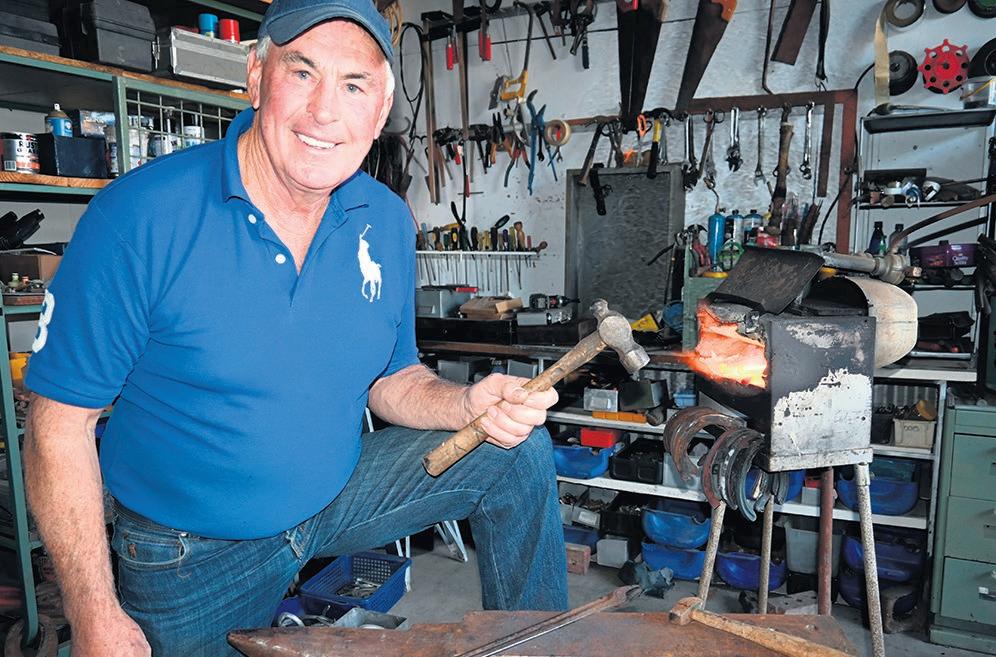
When Gary Crosbie first hit an anvil in anger as a 15-year-old in 1970, Bart Cummings was beginning his rise to success, Midge Didham rode Baghdad Note to victory in the Melbourne Cup, and in the dressage world, Spanish doyen Manolo Mendez was yet to move to Australia.
And farriers were widely regarded as cranky, filthy non-artisans.
“That all changed in the early 1980s when farriers began working alongside veterinarians to help with many horse’s hoof ailments, and respect for them began to rise,” Gary said with a hint of pride.
Although he has moved around the world to hone his skills, Gary finally settled into semi-retirement a few years ago on his property outside of Shepparton.
“I’ve worked in the Sunshine Coast, Melbourne, Germany and most recently in Dubai.”
However, the reputation of farriers when he started out remains a source of self-reflection.
“My boss used to say to me ‘don’t be too fussy’ but I wanted to get every shoe right,” he said as a crisp blue sky greets an early morning demonstration of hot shoeing.
“Back then I even made my dress code a bit better, I’d put some nugget on my shoes to look good and get away from that typical roughness and help polish the image up a bit.”
While his 17.2-hand retired racehorse ‘Red’ thinks it’s too early to have his rugs off, he calms in anticipation of having two new shoes fitted to his rear hooves.
Meeting the changing nature of farriers during the 1980s were veterinarian practices world-wide who started to embrace horse shoeing as a remedial process.
“Farriers were starting to be considered as part of a team in the rehabilitation of horses with abnormalities and injuries,” Gary said.

“We were accepted into vet surgeries, we assisted with diagnosis, and I became involved with the Goulburn Valley Vet Hospital.”
“I was there on a daily basis, looking at all cases.
“So, the farrier world has changed; for example, we have a lot of therapy shoes
today, possibly 500 different types, where once there were only a handful.”
“The farrier is more of a thinking person these days.
“They need to communicate with the owner and do everything that’s in the best interest of the horse.
“But it’s still demanding on the body.”
Gary has kept his strength with five simple rules to preserve his back.
“Always remember to bend your knees to pick up a leg, every time.
“Long clothing needs to be worn to tuck in to avoid drafts; do not ever lay on a hard ground on your back; jeans must have two rear belt keepers right at the back and of course always wear a belt.”
He has had minimal back trouble during his career.
The hot shoeing process starts with a brief chat with Red involving a few hushed and almost terse words which seem to do the trick.
Gary’s hands then guide a range of tools in a fast flurry of foot action, clearing dirt, trimming edges and finishing off with a gentle buff from a small angle grinder.
Red behaves.
The hot shoe is brought from the workshop and gently placed onto the foot and Gary disappears into a cloud of pungent steam.
Gary’s approach is largely academic.
A Churchill Fellowship in 1980 changed his journey as he embarked on a tour of the United States and United Kingdom to learn more about farrier work.
He has used a small whiteboard in his shed to teach and explain the finer points of common hoof and lower leg ailments in horses, and his expertise is well-founded.
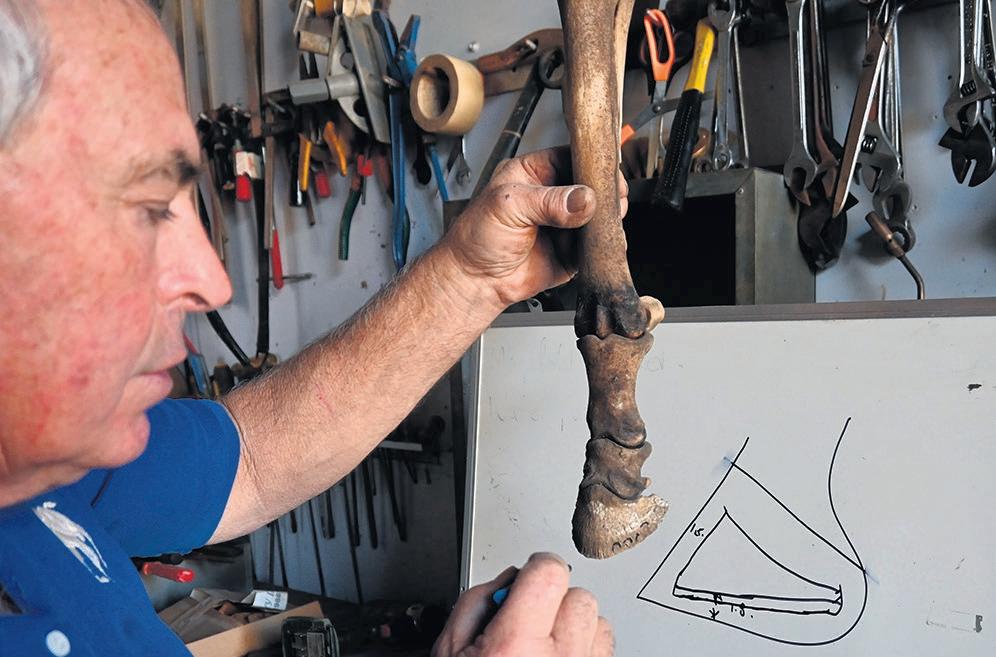
“The whole theory on therapeutic shoeing is to support horses that have minimal sole depth.
“You need to have 15 mm between the ground and the base of the bone, which needs to rise by only four degrees towards the back,” he explains, transitioning seamlessly from a lightning-fast demonstration of hammering red, glowing iron shoes.
Gary’s vast knowledge of the trade is based on those who inspired him in the early days to follow the path that he now draws slowly to its end, satisfied with how the vocation has evolved on his watch.
“Even though horses can be difficult, and you come across very colourful characters in the industry, we all know that everything is now done in the best interest of the horse.”
“But now I want to spend more time riding Red.”
If you had a spare $5,000, what would you do with it? A shopping spree, buy some new furniture for home or how about that holiday you’ve been planning? Well MINI is giving you that this EOFY. Receive a $5,000 deposit contribution+ towards your new MINI on all 36-month MINI Flex Finance Agreements++ with an 8.29%p.a. comparison rate^. Plus, to ensure your driving is worry free, you’ll also receive a complimentary 3 Year/60,000km MINI Service Inclusive (Basic) Package# along with no finance set up fees^^ and a Guaranteed Future Value hand back option.++
Offer available on selected new and demonstrator MINI models with finance applications submitted and approved from 01.04.2023 with vehicles ordered and delivered between 01.04.2023 and 30.06.2023.
Visit Shepparton MINI Garage to get a head start and meet the MINI family.
SHEPPARTON MINI GARAGE.
7969 Goulburn Valley Hwy, Kialla VIC 3631. Ph (03) 58232940. sheppartonminigarage.com
LMCT11214
+MINI Finance, Australian Credit Licence 392387. Fees, charges, conditions and eligibility criteria apply. On selected new and demonstrator MINI models with finance applications submitted and approved from 01.04.2023 with vehicles ordered and delivered between 01.04.2023 and 30.06.2023. MINI Finance reserves the right to change or withdraw the offer at any time. Only one deposit contribution per finance agreement.

^Annual percentage rate 8.29% p.a. Comparison rate based on a 5 year secured loan of $30,000. WARNING: This comparison rate is true only for the example given & may not include all fees and charges. Different terms, fees or other loan amounts might result in a different comparison rate.
++MINI Flex provided by MINI Australia Finance Limited (ABN 78 007 101 715, Australian Credit Licence 392387) consists of:
a) in the case of a loan, an option to deliver the vehicle to us instead of paying the Guaranteed Future Value final balloon lump-sum repayment amount (GFV) at the end of the contract term; or
b) in the case of a lease, an option to return the vehicle to us and not pay the GFV amount at the end of the lease term, provided the vehicle is undamaged except for fair wear and tear as determined by our approved dealer and provided that the contracted kilometre allowance has not been exceeded. The GFV is not a representation of the anticipated market value of the vehicle at the end of the contract term. To be eligible, vehicles must be built within 18 months. Odometer cannot exceed 10,000km at contract commencement. Lending criteria, fees, charges and conditions apply.
#MINI Service Inclusive Basic package commences from the vehicle’s date of first registration if less than 12 months old and no servicing has been completed. The 3 years/60,000kms Basic package with scheduled servicing determined by the vehicle’s Condition Based Service (CBS) monitoring system for 3 years from the date of package activation or up to 60,000kms from the date of package activation, whichever occurs first. Normal wear and tear and other exclusions apply. Scheduled servicing must be conducted by an authorised MINI Garage. For full terms and conditions visit mini.com.au
^^Government Charges apply. Complimentary
exclusions apply. Scheduled servicing must be conducted by an authorised MINI Garage. See mini.com.au for details.
Anaudience of academics, investors and aspiring agricultural entrepreneurs has been given an update on the second cohort of participants in a novel program funded by AgVic and LaunchVic.
Rocket Seeder is a start-up network which provides support to aspiring Victorian entrepreneurs who apply technological innovation to agriculture.
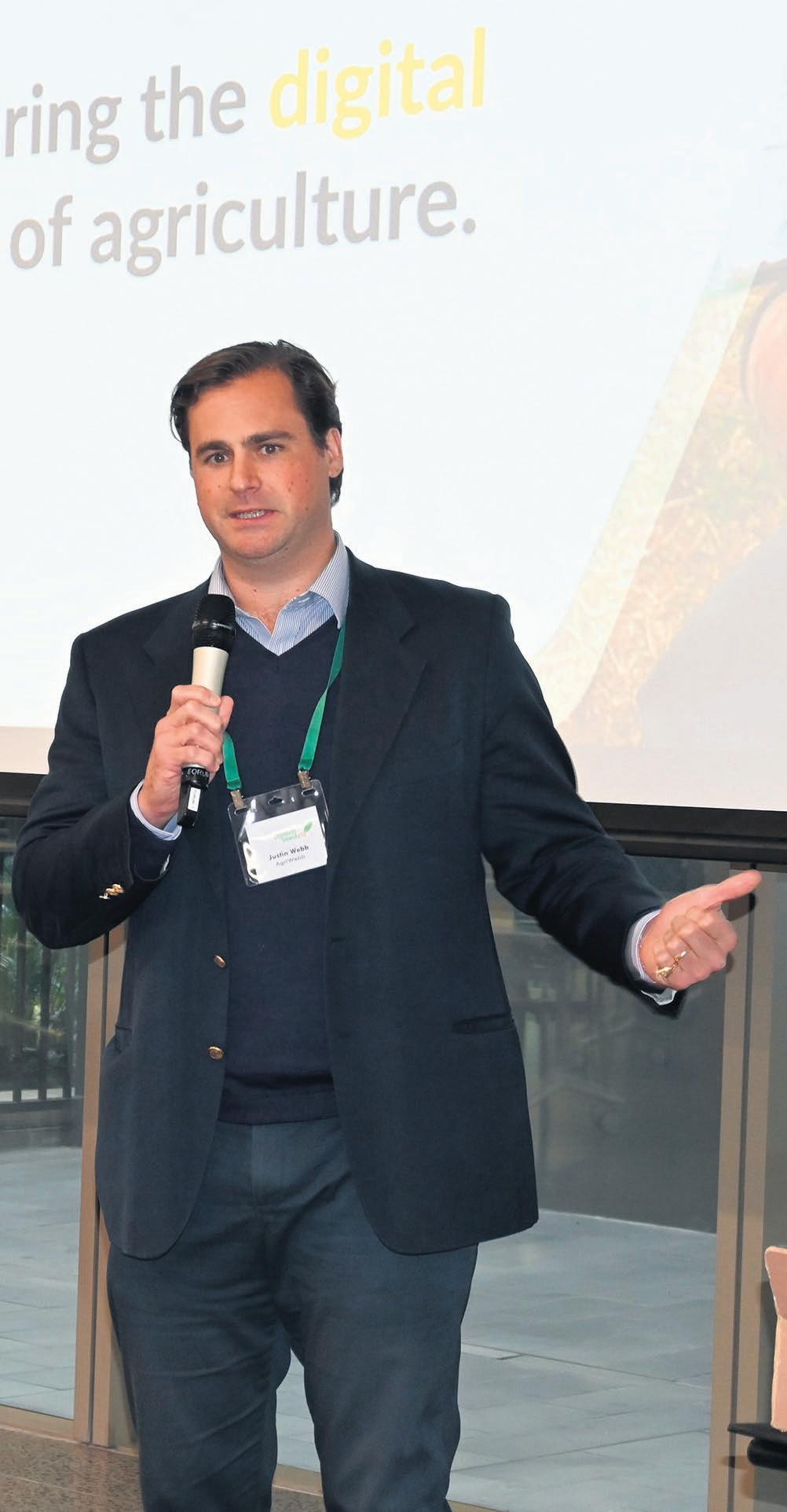
The program facilitates an environment to connect such entrepreneurs with researchers to test ideas before launching their own sustainable enterprise.
The company showcased its second round of participants at Melbourne Connect’s Studio in Carlton on May 5.
Keynote speaker and one of the program’s mentors Justin Webb praised the ingenuity of the second cohort and inspired others to consider their ideas for the third and fourth round of applications.
Justin is a livestock farmer, investor, executive chairman of farm software company AgriWebb and a selfdescribed “serial start-up founder”.
Justin spoke about misconceptions with the timing of establishing new innovations, describing thoughts that it is currently not a good time as “absolute rubbish”.
“Some of the biggest companies in the world all formed during the aftermath of the dot com crash, such as Facebook, Uber and AirBnB,” Justin said.
“You have this roadmap of excitement, and Australian venture capitalists are the leaders.
“There’s a groundswell of venture capital at the moment that’s desperate for you to fill that gap in world innovation, to be a launch pad into the international world.”
Justin suggested that innovators who were taking risks in announcing their ideas should start their project in Australia and so arrive on the world stage “with full credibility”.
“We have some of the hardest testing ground to realise the value of agtech in the world.”
One of the programs accepted in the current cohort is the development of a new software program to help dairy farmers streamline herd management.
ST Genetics researcher Anna Norgren has developed the program to analyse data for each individual cow in a milking herd to compare it against the farm’s actual production targets.
“My job is to help farmers select the best animals for replacement,” Anna said.
“We help the farmer choose which heifer stays, which heifer goes, in terms of maintaining maximum milk production.
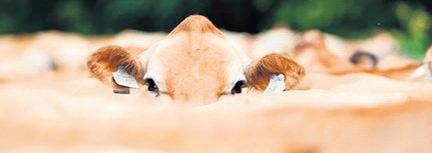
“This AgTech Seed program has accessed funding for us to help validate the software and to develop a network of contacts.”
AgTech Seeds program manager Nicki Marks said mentors such as Mr Webb were an important part of the program.
“We talk about an ‘innovation ecosystem’ and mentors like Justin who have had their own successful start-ups are now giving back into that ecosystem,” Nicki said.
“You need lots of different players, and he’s just one mentor as part of it.
Nicki considers AgTech Seeds to specifically cater to the early stages of an innovator’s dream.
“People at the very beginning of an idea just need to get started and we give that support, and we find that businesses don’t know what they don’t actually know and it’s our job to help them through that process,” she said.
“And there is lots of venture capital at the moment that’s looking for investments.”
The third cohort of participants will begin in July and although a fourth round of applications will be offered later in the year, Rocket Seeder was always ready to consider new projects.
“We would love to hear from anyone who’s interested, and we will talk to them anytime,” Nicki said.
Further information on the next round of applications can be found at: www.rocketseeder.com/ agtechseeds


The message to home gardeners this year is quite clear.
The local fruit industry needs vigilance from everyone with a fruit tree to be more than just on the watch for the Queensland fruit fly.
Home gardeners are being urged to make sure their garden does not become a refuge to the pest by acting now, and the advice from third generation orchardist Tony Siciliano is quite simple.

“Pick up the fallen fruit,” Tony said, as the last of his nectarine leaves carpet neat rows of trees at his Cobram orchard.
“If it drops on the ground then get rid of it straight away.”
The advice does not stop there.
“If you’re not going to use the fruit you’re growing, then get rid of the tree.”
“But if you’re going to have the tree, then look after it.”
Orchardists and commercial growers are being supported to implement a pest management strategy to protect themselves and other growers against Queensland fruit fly.
The Goulburn Murray Valley Fruit Fly Area Wide Management Program was established in 2017 and is currently exploring a range of approaches to support growers in the region to increase their knowledge of fruit fly control methods.
A mentorship program has been built that allows information sharing and knowledge building among growers.
Tony said fruit fly had not been an issue for him because of his stringent management strategies but cautioned that the pest “can get out of hand”.
“Everyone needs to keep their orchards as clean as possible because there are pressures and it’s not just fruit flies; there’s everything else as well, other pests and disease,” he said.
“Also, the home gardeners at this time of year need to know that their orange trees and lemon trees will be where the fruit fly is going for over winter.”
Goulburn Murray Valley Queensland Fruit Fly Program acting regional co -ordinator Penny Aston said the importance of effective pest management on operational and non-operational orchards could not be underestimated.
“We are asking growers, regardless of their size, to implement and review their pest management strategies all year round,” Penny said.
“The need for good orchard hygiene on any individual property level is critical.

“This season we have seen huge Queensland fruit fly numbers that we haven’t seen before, and because of the program, we have been able to
track down exactly where they are and we have found them.
“We need to have all orchards to be kept like Tony’s here; it’s beautiful.
“The poor management of fallen fruit in other orchards and unattended fruit trees at the back of properties have led to population explosions this season, which is extremely disappointing to see.
“If you can’t reach a piece of fruit in your backyard, then cut the branch off; trim the tree down and do that every year so you’ll never have fruit you can’t reach or use,” she said.
Home gardeners are advised to put unused and fallen fruit in a plastic bag and either leave it in the sun for a few days or place it in a freezer for a week.
“Definitely do not just chuck it in your compost heap,” Penny said.
The Goulburn Valley has the largest pear production in the Southern Hemisphere and the Murray Valley is Australia’s largest stone fruit producer.
Tony said the impact of Queensland fruit fly on the region’s horticultural industry had the potential to be “catastrophic” due to stringent quarantine measures.
“If one piece of infested fruit slips through to South Australia then we lose that market; if in a supermarket in Melbourne someone finds a nectarine with a fruit fly in it, it’s not just that one nectarine, but suddenly all the nectarines are no good.”
Penny said the program had identified that area-wide management is the best way to increase both grower and community awareness about the need to take action.
“It is essential that growers here in the Goulburn Murray Valley take a range of measures rather than relying on a single action to help control fruit fly and the development of a robust pest management strategy is the best way to achieve this,” she said.
The Goulburn Murray Valley Fruit Fly Area Wide Management Program is supported by the Victorian Government and can provide growers with dedicated field officers.
For further information, email gmvfruitfly@moira.vic.gov.au, phone 5871 9222 or visit: www.fruitflycontrol.com.au
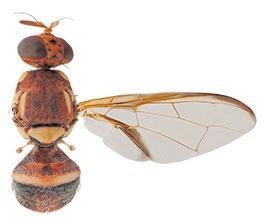 The autumnal views of a post-harvest orchard are a reminder that fruit growers need to be vigilant with their fruit fly management strategies. Photos: Andy Wilson
Penny Aston and Tony Siciliano say that the home fruit grower needs to do more than just watch out for fruit fly, urging gardeners to pick up and dispose of fallen fruit, cut off branches out of reach and remove trees if the fruit is not being used.
The Queensland fruit fly (Bactrocera tryoni) has the potential to have a “catastrophic” impact on the Goulburn Valley’s fruit industry.
The autumnal views of a post-harvest orchard are a reminder that fruit growers need to be vigilant with their fruit fly management strategies. Photos: Andy Wilson
Penny Aston and Tony Siciliano say that the home fruit grower needs to do more than just watch out for fruit fly, urging gardeners to pick up and dispose of fallen fruit, cut off branches out of reach and remove trees if the fruit is not being used.
The Queensland fruit fly (Bactrocera tryoni) has the potential to have a “catastrophic” impact on the Goulburn Valley’s fruit industry.












Telstra is set to road-test a new integrated agtech data platform at Charles Sturt’s Global Digital Farm in Wagga Wagga.
The Farm Data Services platform aims to overcome one of the biggest hurdles in modern, data-driven agriculture how to securely manage and integrate data from multiple technologies across the farm.
Enabled through Telstra’s Data Hub, the Farm Data Services platform provides a highly scalable and secure data sharing platform to integrate,
standardise and, with permission of the data owner, distribute data sets from existing agtech deployments.
The proof of concept will demonstrate the value a platform can provide farmers, agritechs, institutions and researchers, connecting applications across a farm to simplify permissioned sharing of data and creating a single point to access permissioned data for analysis and research.
It will be trialled this year at the Global Digital Farm, which is managed

in partnership with Food Agility Co -operative Research Centre as a test bed for agrifood research and technology.
The road test will aggregate data sources from three agtech providers to enable Charles Sturt research while also creating an application to drive efficient fertiliser application on the Global Digital Farm.

Telstra’s Jon Young Flores said the first wave of digital agriculture had delivered an explosion of data that had left many farmers overwhelmed and
concerned about how their data was being used.
“This next phase of digital agriculture is about a farmer-centric approach to security, integration and demonstrating the return on investment,” he said.
“The Farm Data Services platform puts farmers in the driver’s seat, giving them control over the flow, access and monetisation of their data. Ultimately, we are seeking to prove the value permissioned data sharing can provide to stakeholders across the farmer value chain.”
MCF team is dedicated at providing end to end Design, Engineering and Construction solutions with a high level of customer satisfaction. MCF specialises in offering:

• Structural steel fabrication • Precast panel construction and installation

• Construction of new dairies, sheds, feed pads, free stall barns



• Construction of industrial buildings

















































Anew business venture designed to save almond farmers energy costs when drying their crop is being developed in Albury and Mildura and aims to impact Victorian almond growers throughout Victoria.
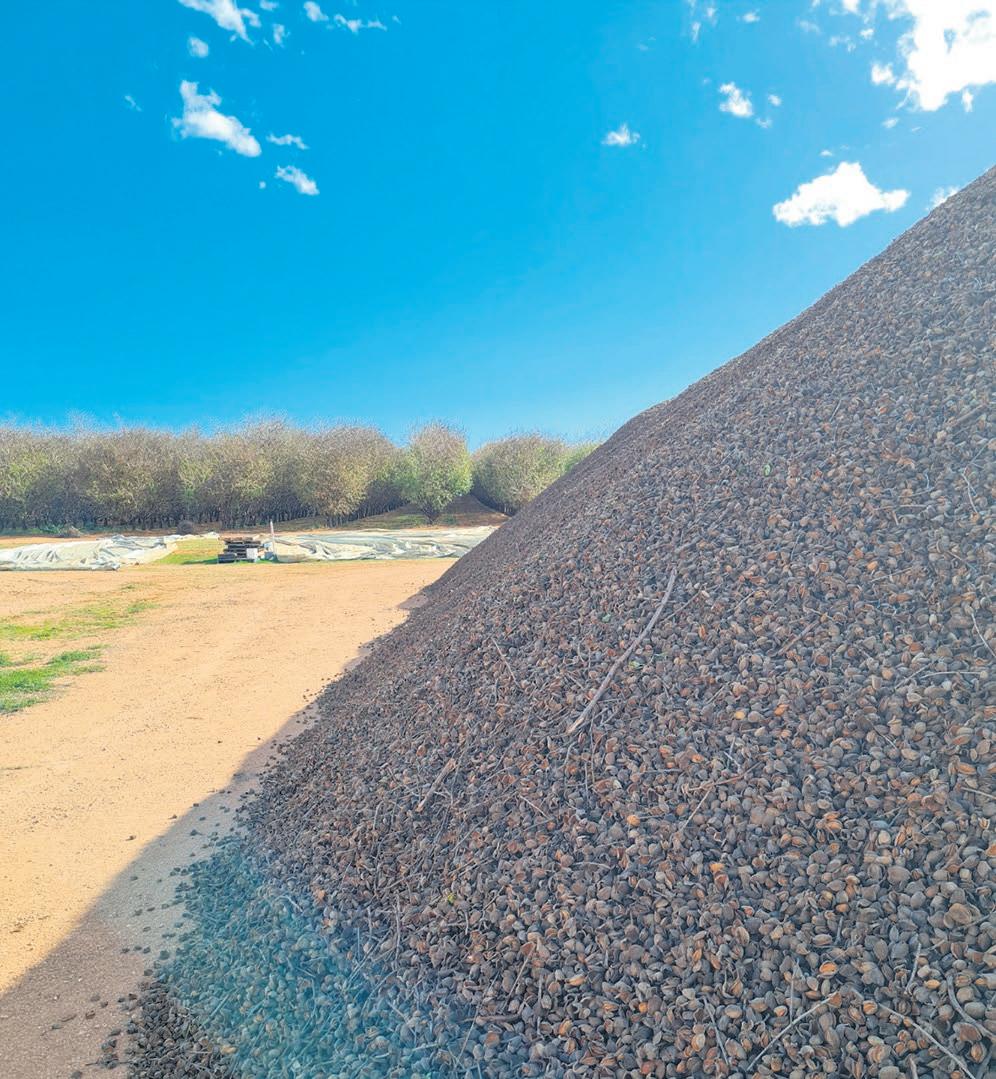
Andrew Fisher operates Harveston Aeration Solutions and has been able to capitalise on start-up investment money to bring his expertise in grain storage to a whole new industry.
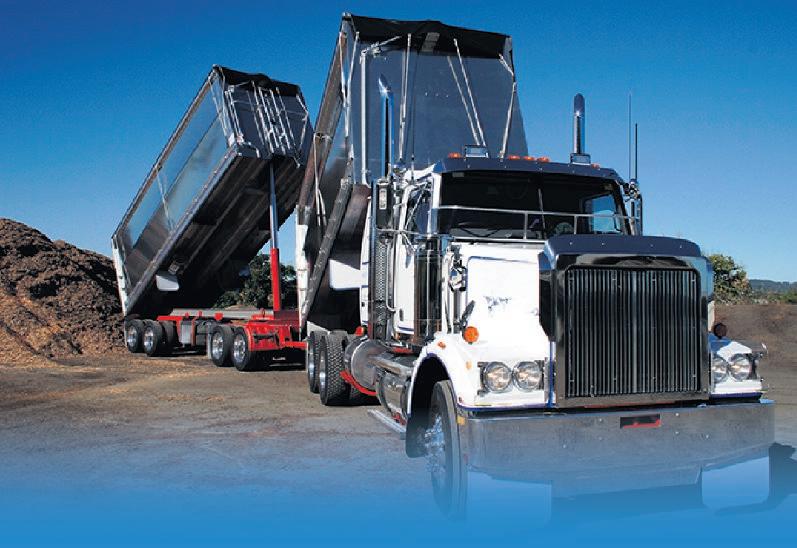
The inspiration for the company is relatively new, with Andrew first initiating the concept late last year.



“We were just an idea in September last year, established a company in December and here we are in








May 2023 fully embedded in our research and looking ahead,” Andrew said, who found inspiration also from the heavy rainfall.

“In the last two years the harvest has been diabolically late, so we ask ourselves ‘what do we do with wet almonds’?”
At present, Harveston is churning through the numbers from research experiments which have produced more than promising results, with Andrew saying the company was getting their expectations well met.

“We surprised ourselves with the results,” Andrew said.
“We lowered whole almond moisture from 25 per cent down to 11 per cent and for just the almond kernel from

10 per cent to five and a half per cent, both of which are what’s acceptable by industry standards.
“We learnt that too much air is possible but most importantly we found that after two days of drying at just 60 per cent of maximum fan speed for two days, we got the almonds dried just as good.”
The results have gained the attention of other growers with two members of the industry at a local field day surprised at how much the new process could save on electricity.
“Instead of waiting for harvests to dry in the field, with this system you can shake, sweep and fully harvest with leaves and all and still have a deliverable product in 21 days.”
With the industry expected to increase by 30 per cent over the next five years, and no increase in the number of processing facilities, the typical timeline of rushing a crop straight to processing will be relaxed and allow farmers to dry their crop efficiently on their own property.
“Processing is done normally in August and September, but one processor is now having their incoming crops pushed back to November,” Andrew said.

“This is driving the need for on-farm storage and therefore allowing more time to dry the crop.”

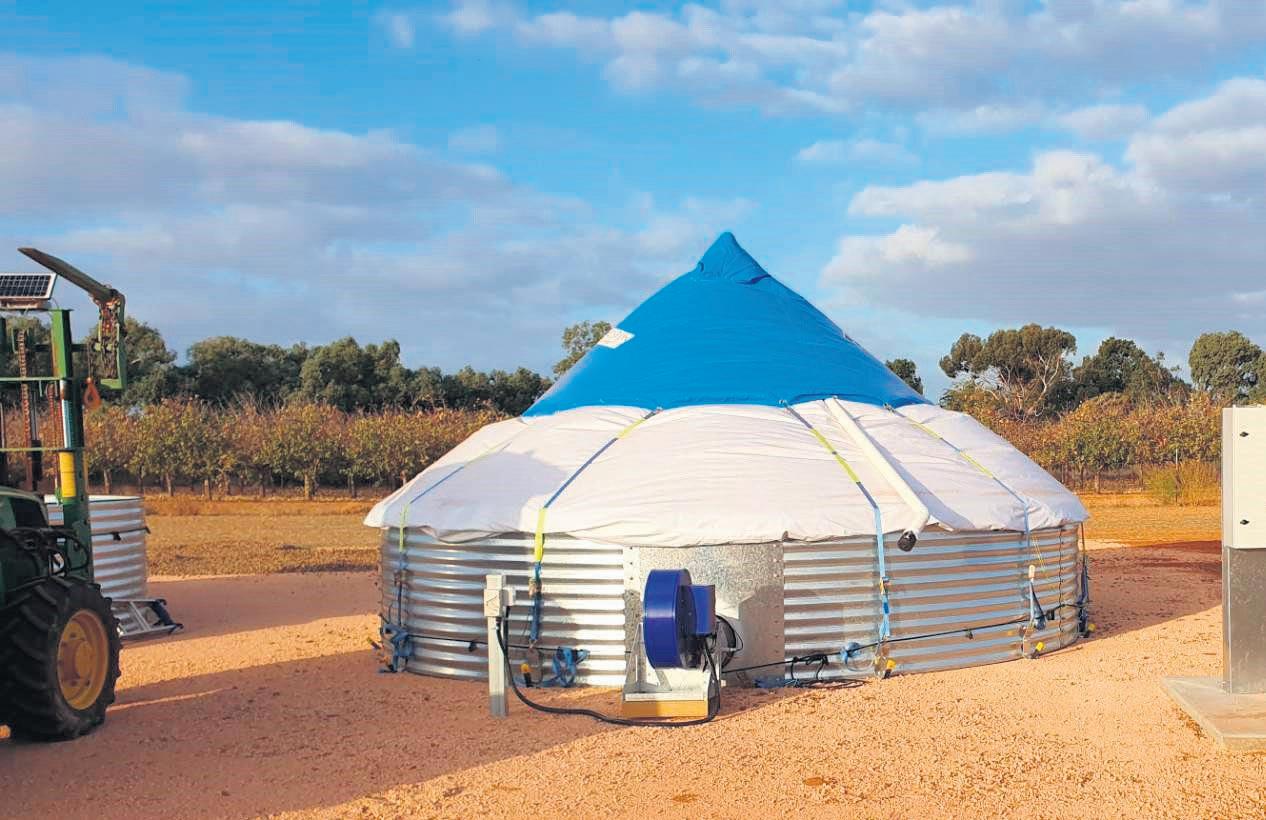
Another side to the almond story
is the storage of byproducts, with 60 to 80 per cent of any harvest being used in stock feed as a high source of dietary fibre.
Storage of the byproduct can pose a fire risk, with one Riverland fire destroying a semi-trailer two years ago.
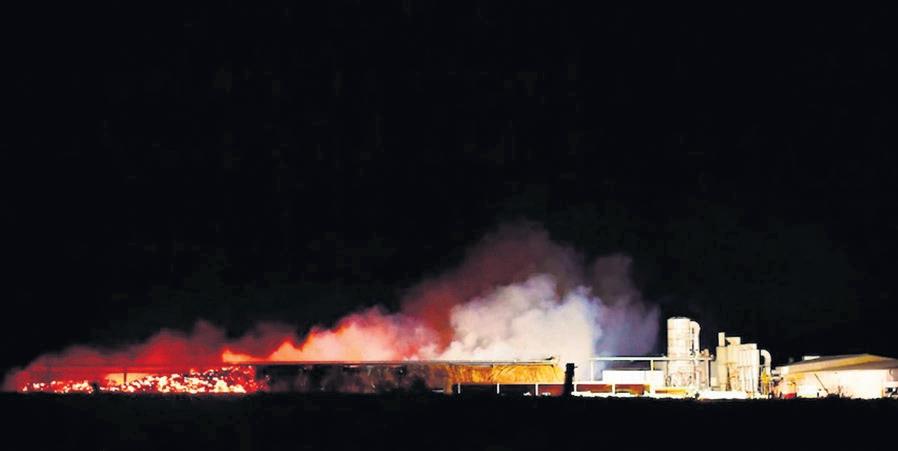
Harveston has a developing plan for reducing that risk.

“We are developing other technology for global use to help with byproduct storage,” Andrew said.
“We know the technology; we just need to deliver the structure for that.

“But we are well down the track on that one.”
A driving force behind Harveston is the contributions from UniSA, and Andrew has high praise for Industry Professor of Mechanical Engineering John Fielke.
“It was John who initially gave us the idea and he has been very helpful with this; however, he is also a very pragmatic and practical person.”
Despite Andrew’s enthusiasm which overflows when he talks about the new company, that practical approach remains his mainstay.
“There’s only so much venture capital out there and at present we are interviewing for prospective board members as we build this company up,” he said.
“We don’t want to get ahead of ourselves.”
Holsteins of Cohuna is hoping its milking herd will be housed in a purpose-built, 750-head free stall barn and the cow comfort it has dreamed of for years will finally become a reality.


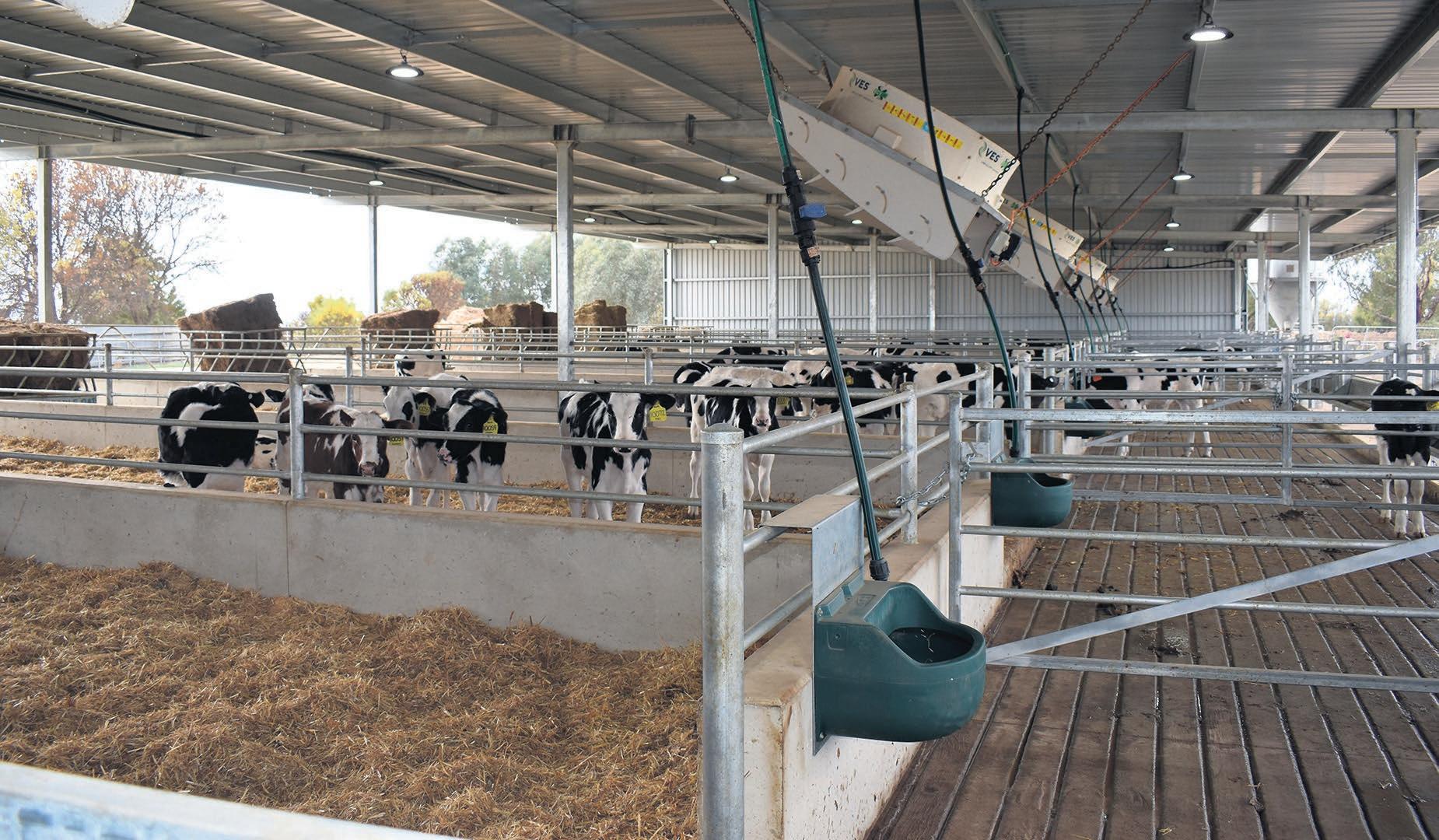
Glen and brother Drew said the barn was the result of five hard years of hard work researching and refining detail with the goal to take animal welfare to the next level and protect their herd from climate extremes.
“This development is all about cow comfort and the theory the more comfortable the cow is, the better she will milk, the higher her fertility will be and the more cows we can get in calf,” Glen said.
“We have one of the top genetic herds in the country and we wanted a facility and a system to match.”
The 200 m free stall barn was started in January.
Once completed the brothers expect the herd to spend the majority of their day in the barn comfortably eating, drinking and resting.
“The cows will leave the barn twice a day for about an hour and a half for each milking. There will be a lot of work droving the separate herds to and from the shed and cleaning the beds when they are gone,” Glen said.
The brothers haven’t ruled out letting the cows graze at certain times of the year, but that will depend on the weather and what happens in the vat.
“We will just wait and see how all
that works out — the cows might end up spending all their time in the barn,” Glen said.
He said they were expecting to run three separate herds — a sick herd, a fresh herd and possibly a young herd but again they would have to wait and see.
The decision to build a barn wasn’t taken lightly, however they are confident in their decision to build a free stall barn complete with undercover sand beds and a 90 m compost loafing area.
“It will be like the cows are sitting in their own cubicle at the beach,” Glen laughed.
The decision to use sand for bedding is a more expensive option but the fact bacteria can’t grow in sand was a huge driver behind the choice.
They purchased a 80 horse power tractor whose specific job will be to rake the sand beds every day.
“We have also invested in a sand trap that is designed to reclaim 95 per cent of the sand we use and because sand will be a significant cost to the business, we want to reduce that cost where we can,” Glen said.
In simple terms, wastewater from the barn will flow into the trap and the sand will accumulate in the top section where it will be dragged aside and into a pile, while wastewater will flow into a pond and be reused and recirculated across the farm.

The barn will have its own 100 kW solar system which will generate



enough power to run the 64 fans placed throughout the facility.
This is the second solar development on the farm.
“Dad is a big believer in solar and we have had a 100 kW system on our dairy for the last five years and it has certainly helped reduce our power costs.”
Despite completely changing the management of their farm and the herd, Glen is looking forward to what the future will bring for their operation.



They plan to increase the milking herd from 680 split cows to 880.


There are no plans to change the











existing 60-unit rotary dairy, although a concrete laneway will be constructed to link the dairy to the barn.

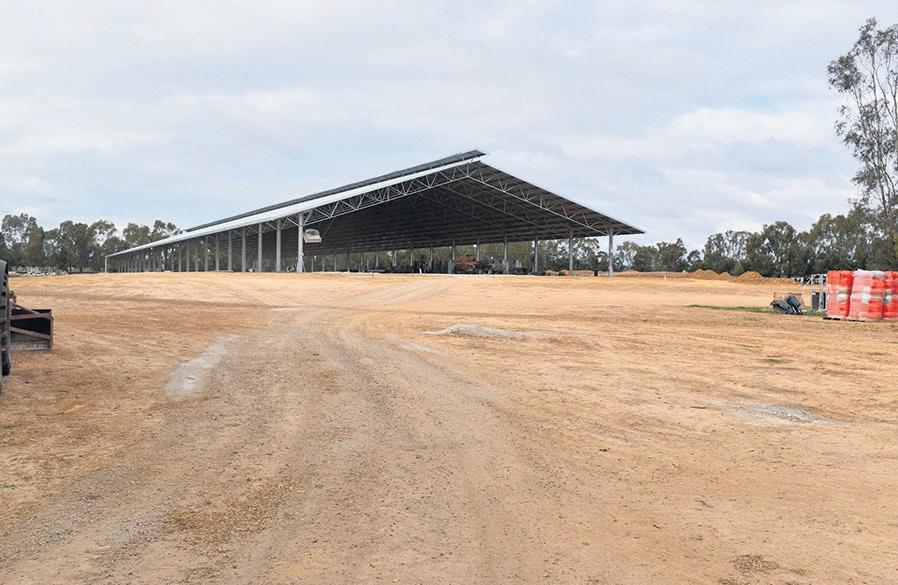
“Animal welfare is going to be a huge issue for the industry moving forward and we are passionate about ensuring a sustainable future — this investment is all about ensuring we have happy and content cows,” Glen said.

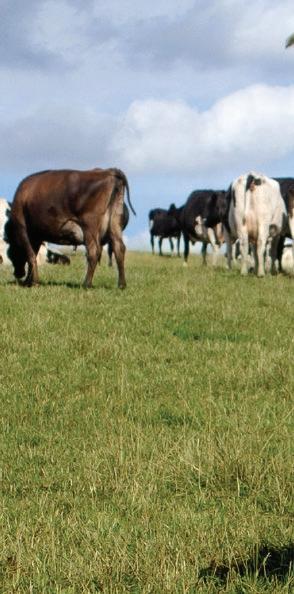

“Dad always said if we stayed in the industry long enough we would reap the rewards and the last few years we have had record prices and there is a lot of confidence in the industry at the moment.”
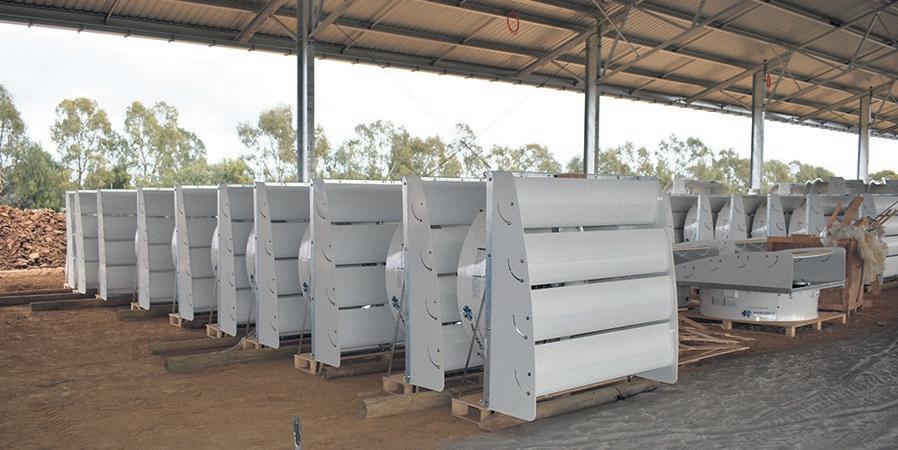


AJapanesemarket hungering for high-fibre flour is driving the introduction of a new wheat variety which has been sown on Victorian farms as part of a second and larger crop being exported to Japan.
Arista is a wheat which has been bred in Australia by conventional methods and has the potential to ward off bowel cancer and Type 2 diabetes.
Bungeet wheat farmer Jock Binnie spent a quiet late-May twilight inspecting his newly sown crop of Arista, which now stands at 10 cm tall in emerald-green rows.
The Binnie farm is one of seven in north-east Victoria that are part of the wheat variety’s second season.
For Jock, sensible scrutiny of the trial was necessary, as it is not the first time the fifth-generation farm has come across something considered revolutionary.
Such thoughtful analysis has given the trial crop its credibility.
“We’ve been through a lot of these sorts of things,” Jock said.
“They are going to be the next big thing and then they fizzle out, but we are pretty confident with this one.
“We are trusting in the positives with this and there’s not a lot of negatives.”
One positive for the scheme is a guaranteed export price.
“We are excited about being able to lock in that higher price and have that bit of control over the market,” Jock said.
“And it allows us to diversify our market as well.


“We have our usual domestic and export crop, but this is just another avenue we can go down.”
The high-amylose grain has been developed by Arista Cereal Technologies, a company formed by CSIRO after 16 years of collaboration with Grains Research and Development Corporation and the French company Limagrain Céréales Ingrédients.
Amylose is one of the two carbohydrates that make up starch which is one type of dietary fibre.
Conventional wheat varieties have an amylose composition of 20 to 30 per cent.
The amylose content of Arista wheat is an unprecedented 85 per cent.

High amylose content allows for more ‘resistant starch’ in the diet.
Such starch ‘resists’ being digested in the small intestine and is retained until reaching the bowel where its fibre properties help resist bowel cancer.
Resistant starch can also help combat Type 2 diabetes.
A Japanese flour mill has been conducting trial work on the grain and has ordered 8000 tonnes to be grown this season.

The Binnie’s farm is one of the producers which has been asked to take up this supply.
Farm Trade Australia director David Matthews said the approach used to develop the new wheat variety meant it was not catering to a niche market.
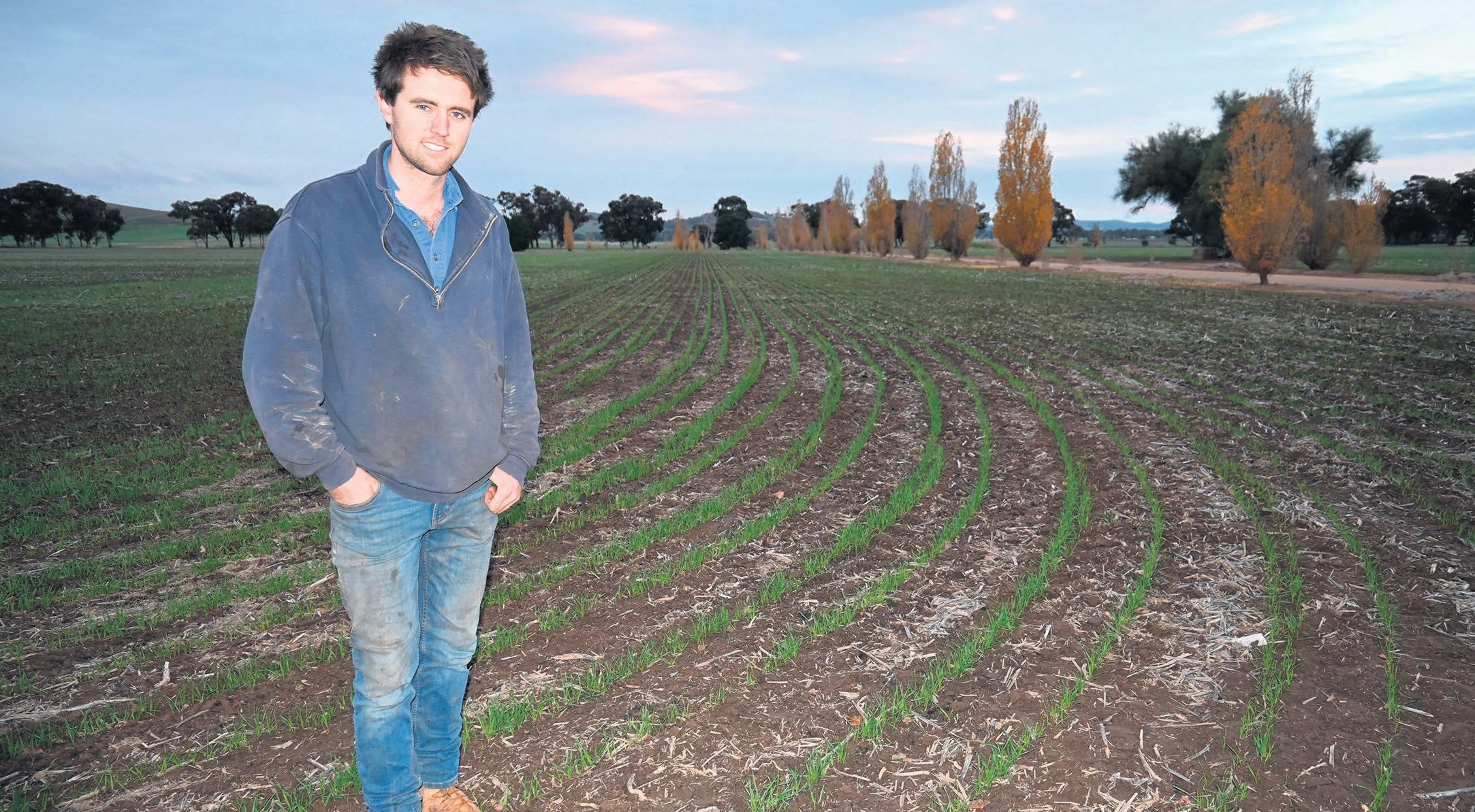
“This will grow,” David said.
“When you have such a high-fibre
wheat which reduces Type 2 diabetes and bowel cancer, then you know that this will grow.”
Jock said the decision to grow the wheat came down to David being frank about the yield.
“David has laid out the risks for us; and it’s only if we don’t make spec with really damaged wheat that we will be affected,” he said.
“Potentially we know this variety has a little less yield than our conventional wheat, and if it yields that little bit less and we get weather damage then we’ve effectively copped just bit a of a hit on yield for something we can then sell onto the domestic market.”
Jock points to one of the farm’s six
1350 tonne silos.
“David and the Japanese importers have really emphasised wanting very hygienic people to grow it, so we are dedicating a silo to this.
“We are very clean with our seeders and headers and with segregation from other varieties.
“The effort you need to go to in ensuring this, makes the price justified.”
Jock’s understanding of the dietary science behind Arista underlies a confidence that matches that of the variety’s developers.
“We are really excited to be a part of this project and we think it will even take off in Australia and other parts of the world.”
Jock Binnie has encountered enough crop varieties touted as the 'next big thing' to sense that Arista wheat is worth investing in. Photo: Andy WilsonOutside of Rutherglen, a modest 40 hectare property is beginning to thrive with its organic management practices to produce a range of sought-after flours which are grown and milled on-site.
A sizeable grant from a not-for-profit network of sustainability leaders has given the farm a welcomed boost through the purchase of a newly imported flour sifter.
Courtney Young and partner Ian Congdon may have had diverse family backgrounds in farming, but they
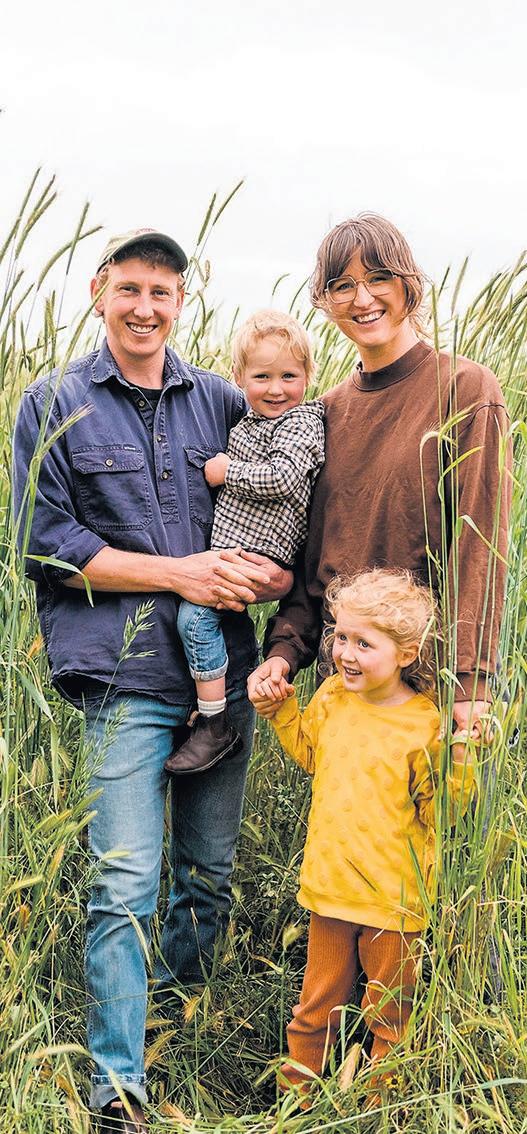
have become a determined duo since establishing Woodstock Flour six years ago.
“Organic farming is all that we’ve ever known,” Courtney said, whose father was an oyster farmer.
“Ian grew up on his parents’ organic farm in Berrigan and so we decided to start our own business,” she said.
The couple’s prime objective is to build resilience in the enterprise by using unique organic amendments to traditional farming practices.
“The main thing for us is to have no synthetic fertiliser or herbicides and pesticides.”
Woodstock Flour proved to have the right concept in action to gain inclusion into the Sustainable Table community and find its place on that organisation’s regenerative online map.

Sustainable Table connects regenerative farmers with funders and uses its map to give it’s members some visibility as a growing community of change-makers creating a healthier and more sustainable future.
Sustainable Table chief executive officer Jade Miles said the map was the first of its kind for the regenerative food and farming industry.
“We’re aiming to grow the number of businesses listed on the map to 1000 or more by the end of the year,” she said.
Woodstock Flour was incorporated into the map at its inception 10 months ago along with 40 other farms and businesses and was recognised for its sustainable and organic farming methods.
Worm castings (vermicast) sourced from Albury are used on the farm as both a soil fertiliser and a seed dressing.
In addition, Courtney and Ian choose to not sow any summer crops in order to contain soil moisture.
And despite ‘no till’ farming gaining traction in mainstream broad-acre farming, Courtney said that the practice of direct drilling without ploughing brings with it major weed infestation.

“We’d like to reduce tillage, but we
are limited at present.”
Weeds are managed over summer with a mixed species of cover crops which provides nitrogen fixation and maintains soil biology, while suppressing weeds.

The mix includes radish, two species of clover, rye and oats and is designed to rebuild soil fertility.
Courtney and Ian’s aim is to direct drill grain crops into the dying cover crop and at present are trialling different methods.
Because more modern varieties of wheat are shorter, weeds are more difficult to control.
“However, we think the non-use of herbicides outweighs the benefits of no-till soil management, and so at present tilling is what we do.”
Direct drilling for winter grains has been met with challenges, but Courtney is confident their method will be refined over time.
Jade Miles cannot praise enough the aspirations of Courtney and Ian and describes them as ‘trailblazers’ in organic, regenerative farming and believes their strongest trait is the relationships they have developed.

“They live and breathe collaboration and not only is that their default setting, they have an ability to embed that into their community which gives agency to others,” Jade said.
The regenerative style of farming at Woodstock Flour does not stop at
Woodstock Flour also raises Hampshire Down-Merino cross lambs for the local community market. Sustainable Table membership allowed the couple to capitalise on a ‘generous’ grant and purchase a state-of-the-art flour sifter they imported from Denmark.growing five different cereal grains.
They also sell lambs to a local niche market, produced from their 35 head of Merino ewes that they cross with a Hampshire Down ram.
The couple’s expertise with the livestock involves the delicate balance with which they incorporate the sheep into the rest of the farm.
“We rear them based on holistic management principles, rotating them quite frequently as a strategy for crop management and of course for animal welfare,” Courtney said.
“Having a diversity of products is good for business.”
Such diversity has put Woodstock Flour literally ‘on the map’, which Sustainable Table has designed to help the sustainable food and fibre industry share knowledge and allow conscientious consumers to find regenerative businesses to support.

It also allows funders to discover new investment opportunities.
Courtney and Ian capitalised on joining Sustainable Table by applying for and receiving a grant they describe as ‘generous’ to buy a new sifter from Denmark.
That opportunity allowed them to produce a much more finely sifted flour resulting in a far superior product.
“The imported sifter has made all the difference, and the flour makes better cakes, breads, biscuits and pasta,” explained Courtney, grateful for being connected with an investor.
“Thanks to Sustainable Table, we can provide a better service to our community.
“Sustainable Table have the connections to help fund change.”
The inclusion of Woodstock Flour into Sustainable Table was a ‘bit of a no-brainer’ according to Jade, who believes that the type of work which Courtney and Ian undertake is not being done by others.
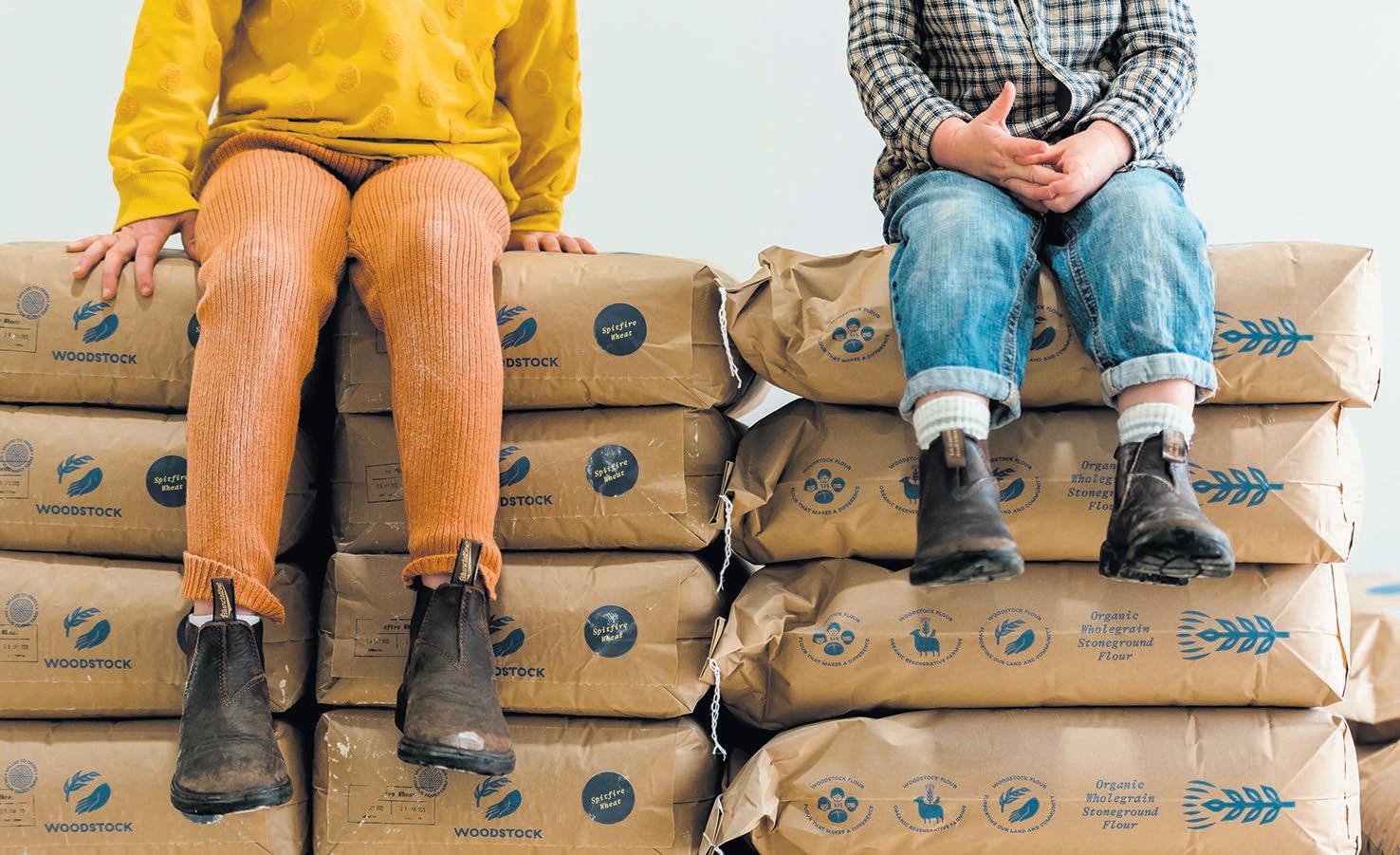
“They are amazing, they are incredible, and they don’t do anything without thinking about its impact on the landscape.
“They are always seeking to change the food system and what we need is a higher grade of processing to meet bakers where they are at and if we can do that then in theory Courtney and Ian can push a lot more heritage grains onto the market.”
Jade is currently seeking farmers within the Goulburn Valley to peruse the regenerative map online and consider applying to help build a growing army of regenerative farmers.
“It takes only 45 minutes to apply, and we undertake due diligence to everyone who applies.

“We want other farmers to see what our model looks like and you can’t do that without the mass of voices being seen in one place.
“Regenerative farmers should get involved.”
For more information, visit: www. sustainabletable.org.au/map
Sustainable Table has added more than 40 agricultural enterprises to its online map which practice regenerative methods. While the map includes producers from Queensland to South Australia, more members are needed from the Goulburn Valley according to chief executive officer Jade Miles.
 Woodstock Flour has been operating for six years and moved to Rutherglen in 2021.
Woodstock Flour produces a finer product that is preferred by bakeries for a range of products.
Woodstock Flour has been operating for six years and moved to Rutherglen in 2021.
Woodstock Flour produces a finer product that is preferred by bakeries for a range of products.



































Coolabah Turf has come a long way from a little business that started out in the middle of the drought in the front paddock of an Echuca property 20 years ago.


Back in those days, Suzie and Brad Shearer had a young family and a dream to grow some grass.
Brad would cut the turf and Suzie would hand roll it — with a baby lying in the pram next to her.
However, with a focus on innovation, sustainability and quality staff, Coolabah Turf has now grown into one of the biggest turf businesses in the country — spanning 234 hectares under production, across six strategically placed farms in northern Victoria.
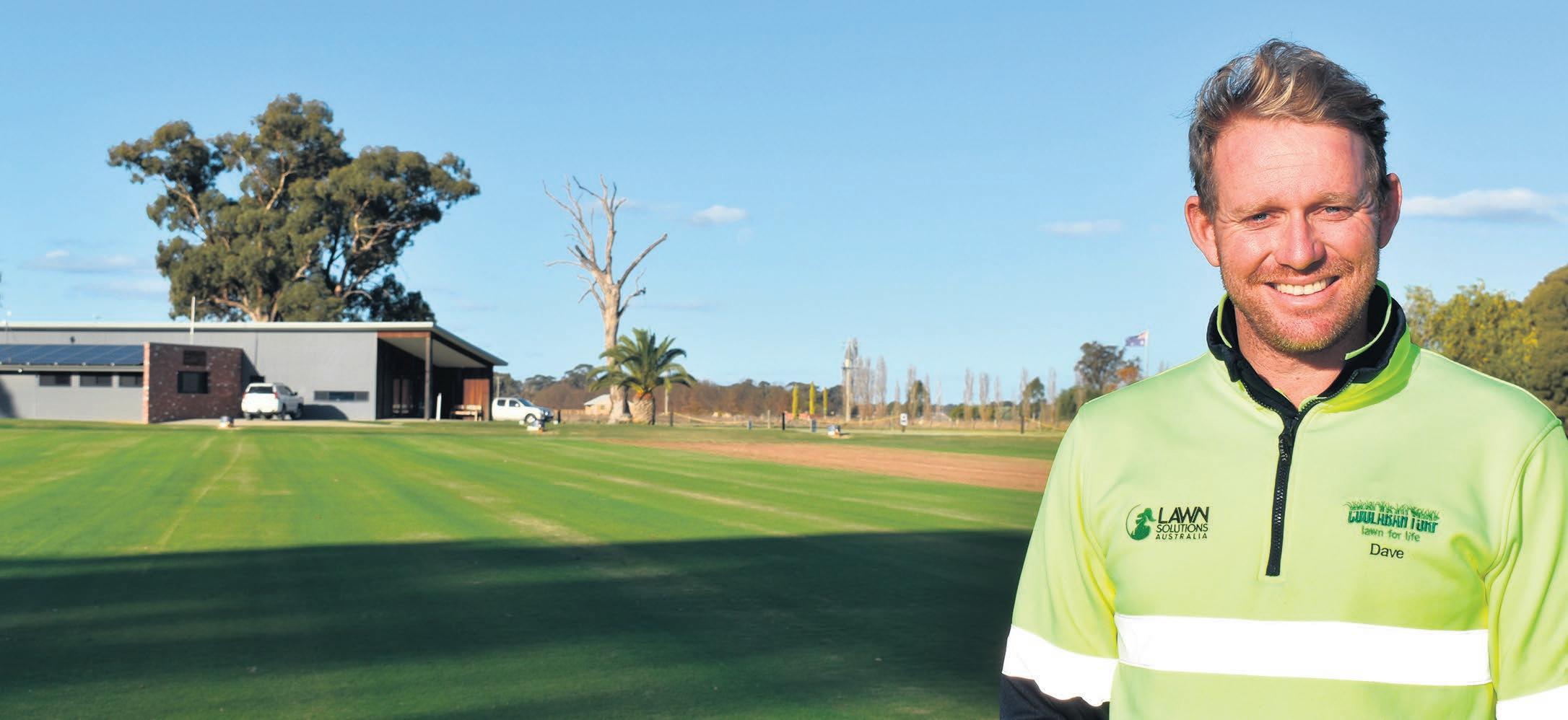
But it hasn’t been easy.
“We started Coolabah in the midst of drought when lawn watering bans were in full force and we were paying $1000 a megalitre of water,” Suzie said.
“We basically had a product we couldn’t market so we soon worked out pretty quickly we had to either get
out or get better and that’s where our focus on sustainability really started.”
Initially growing tall fescue, Suzie and Brad made the move to more drought-tolerant species including Sir Walter DNA Certified Buffalo, Eureka Premium VG, Eureka Kikuyu and Nullarbor Couch.
“We went from rolls to slab-cut turf with a soil base between 30–40 mm, allowing for quicker establishment and half the water requirement and we haven’t looked back since,” she said.
Farm manager Dave Geltch has been with the business for five years and he just loves growing turf.
“It’s a bit like managing a huge landscape garden every single day of the year,” Dave laughed.
Dave is responsible for 15 staff and the day-to-day operations of the business.
“Here at Coolabah, we grow licensed varieties protected by plant breeders rights and nothing is grown from seed. We grow four types of grass species and six different varieties,” he said.
Each grass might be managed differently at harvest but the maintenance and day-to-day care is similar.
“Water, fertiliser and aeration are our friends in the turf game,” Dave said.
“Sir Walter is grown on top of the ground. Our turf slabs are 16 inches wide and when we harvest, we leave behind a two inch wide strip of grass between rows which then regrows.
“Our other varieties are rhizomebased grasses and we clean cut the rootstock back to ground level and it then regrows.”

The business expects to get around 10 years of production before a paddock is re-lasered and the process starts all over again.
Any form of agriculture has its challenges, and growing turf — especially during the cooler months — is certainly no exception.
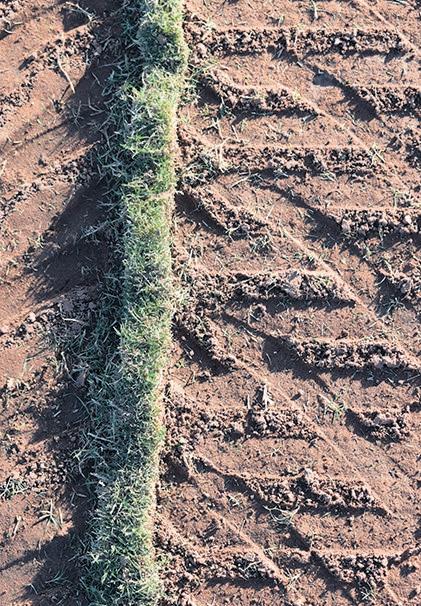
The team has always been openminded and innovative when it comes to trialling new ideas.
“One year we hired a chopper to fly at 50 m above the ground, sitting in the inversion layer to mix warmer air (at about 5 degrees) with air on the ground sitting at around zero degrees,” Brad said.
However, their most effective practice has actually been the use of frost blankets.
“The cloth helps minimise the impact of frost damage visible on the leaf, as well as accelerate the recovery of damaged stock as we transition into warmer spring weather,” Brad said.
“Dragging cloth around is a huge labour strain — but given the market we need to supply and the volumes we need to produce during this period — we couldn’t do without it now.”
Trialling the use of organic and synthetic fertiliser products to improve
cold hardiness and lower plant freezing points is also a key focus for the business.
While frost wasn’t really an issue last winter, the extremely wet conditions threw up their own unique set of challenges.
“The wet season might have inhibited turf growth but on the positive side, water use for the entire year was way down on our average use of 7.5 Ml/ha,” Dave said.
Coolabah Turf might have grown to surpass the wildest dreams of Brad and Suzie, but they maintain they couldn’t have done it without their staff.
“Staff are the key to the success of any great business and we certainly wouldn’t be where we are today without ours,” Suzie said.
“We have always loved and thrived on our ability to grow a great quality product, provide on-time delivery and get daily praise from happy customers about the service our team offers and that will never change.”

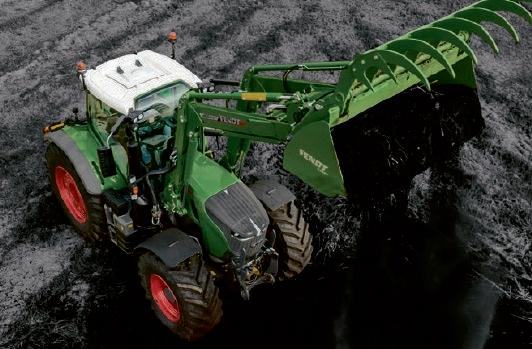





























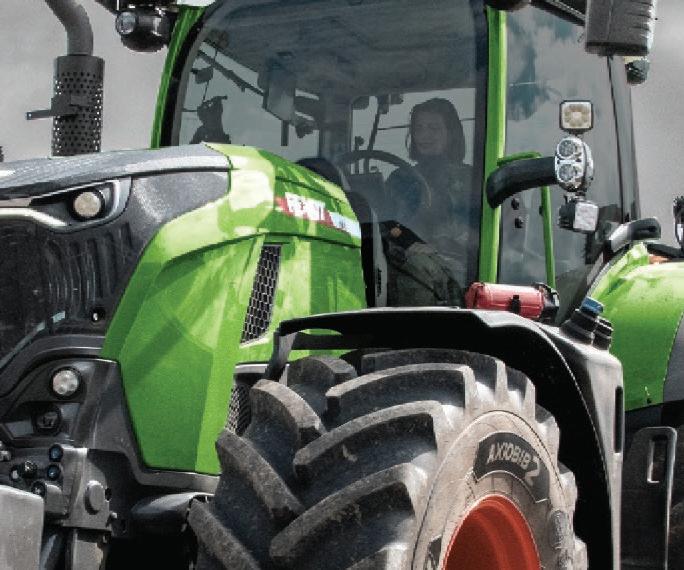

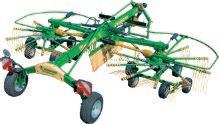






Asurvey looking at trust and distrust in Australia’s agricultural sector shows that farmers who trust a particular agribusiness brand are 127 per cent more likely to have used that brand in the past 12 months.
The special Roy Morgan Agribusiness Survey of Australian farmers found a direct correlation between trust and brand use — those who trust a brand are much more likely to use them, and to use them regularly, while the reverse is true for those who distrust brands.
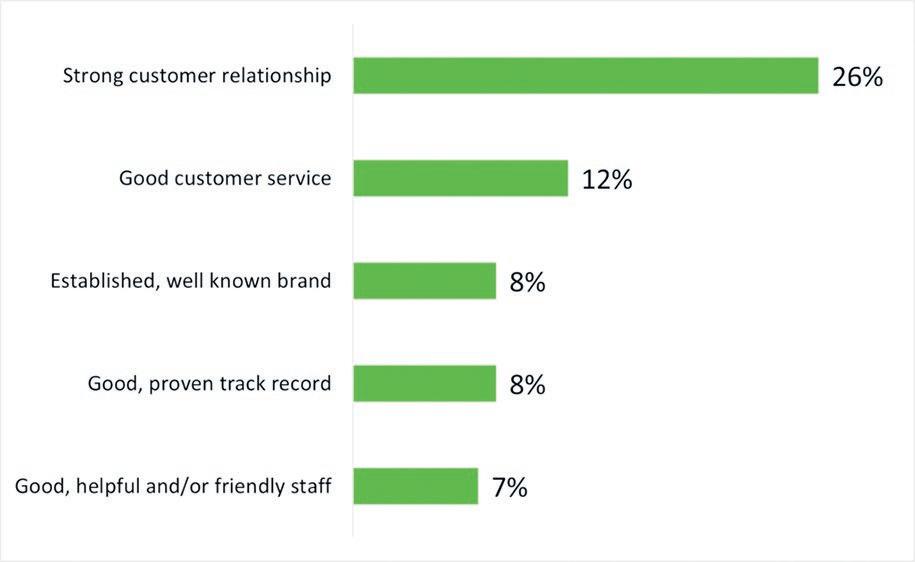
“When customers trust a brand, they continue buying its products or services, they recommend it to others and remain loyal to the brand. So trust is the underpinning foundation of brand reputation,” Roy Morgan chief executive off icer Michele Levine said.


“This is especially important in the farming and agribusiness industries where building and maintaining trust is a key pathway to developing business and personal relationships within this competitive sector.”
The research also found that the top reason farmers trust agribusiness brands is a ‘strong customer relationship’, followed by ‘good customer service’ and a ‘good track record’, indicating that relationship building in agribusiness is paramount in driving trust and gaining repeat business from farmers.
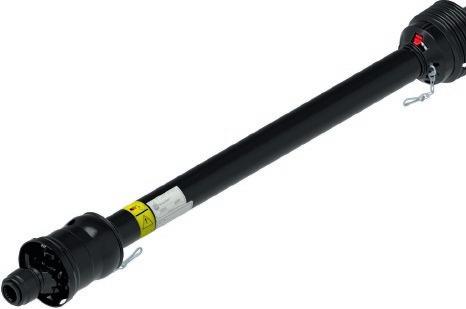
In their own words, farmers described their reasons for trusting agribusiness brands: “Personal service, long-term relationship”, “their ongoing assistance and experience with products we need”, “have dealt with them for 30-plus years and have always found the people reliable and trustworthy”, “I have dealt with them over a long period of time and know the employees”.
The same study found that farmers who distrust agribusiness brands are 53 per cent less likely to consider using that brand in the future.
“While trust puts the business into agribusiness, distrust destroys it. Distrust is an active belief in a brand’s unreliability or dishonesty,” Ms Levine said.

“Distrust implies negative experiences or perceptions that can significantly damage a brand’s reputation, leading to more severe



and often long-term financial consequences.
“Distrust is much more challenging to overcome and requires substantial efforts to rectify the underlying issues, rebuild the brand’s image and regain customers’ confidence.”
Major industry player Elders was the most trusted agribusiness brand by Australian farmers in 2022, while NAB emerged as the most trusted bank for agribusiness.

The research also analysed the challenges faced by Australian farmers, which put inflation and soaring costs as the number one challenge, followed by weather events and labour shortages.



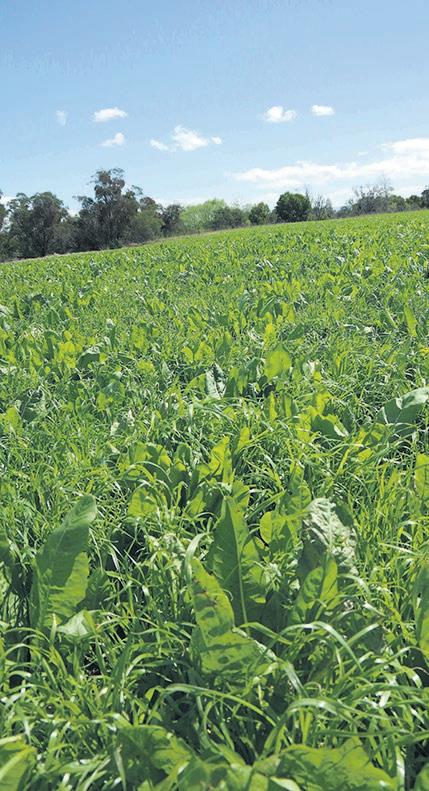
The Roy Morgan Farmer Agribusiness Brand Trust Survey results are based on 1230 interviews with Australian farmers aged 18 and over, conducted during June and July in 2022.





This regular survey draws on Roy Morgan’s research panel of more than 30,000 Australian farmers from dairy, cropping, livestock and horticulture sectors, on large to small farms.
The 2023 Roy Morgan Farmer Agribusiness survey will be conducted in June, providing the latest insights into challenges for farmers, and their perceptions of, and experiences with, key agribusiness brands including brand health, trust and distrust.


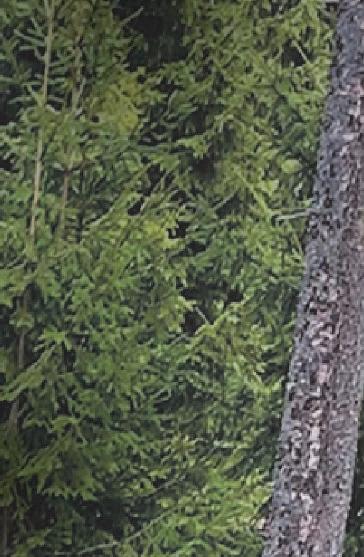
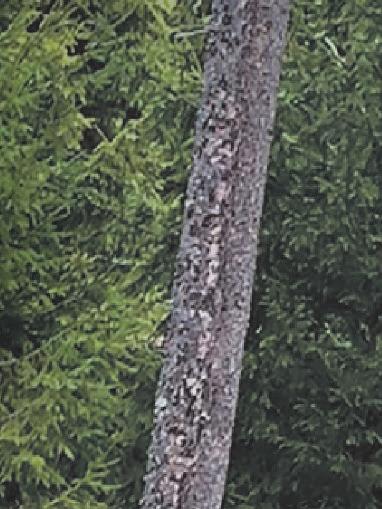









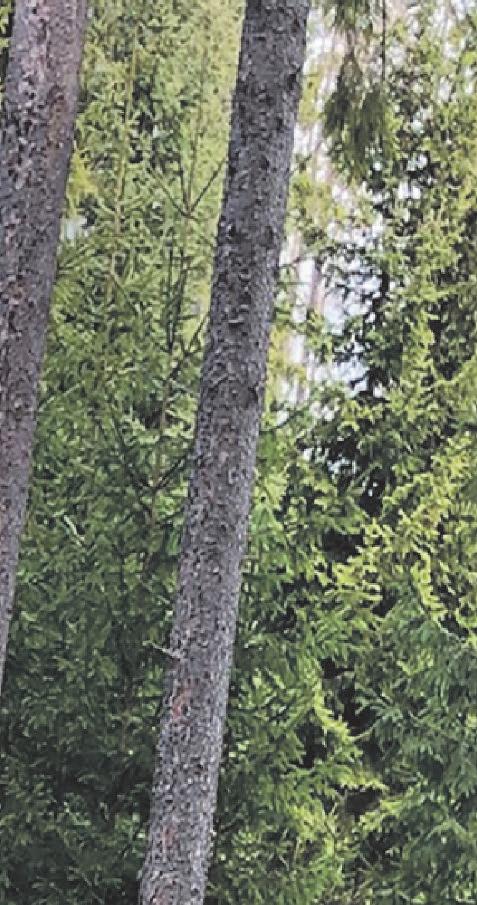





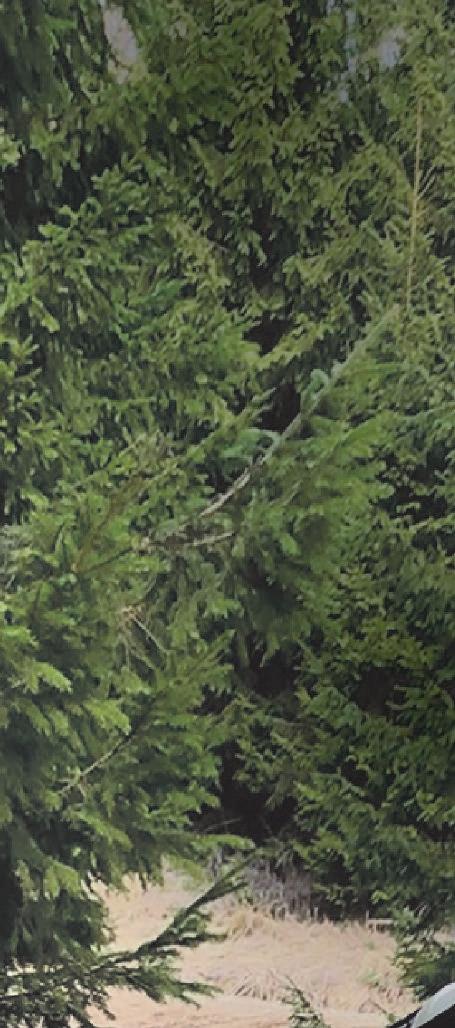







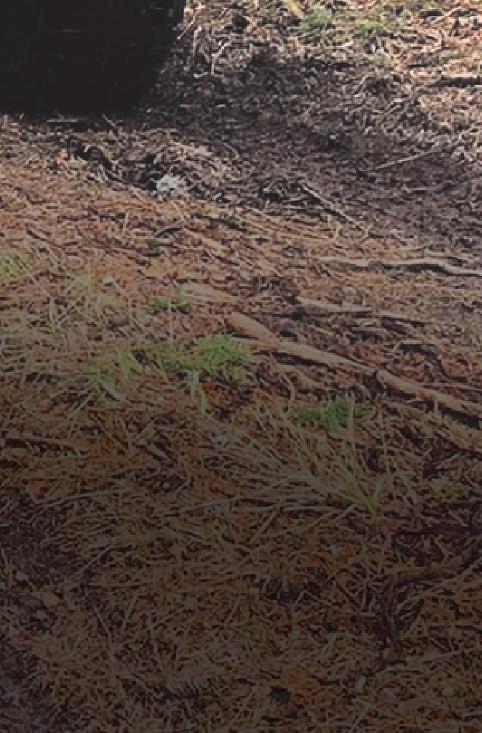

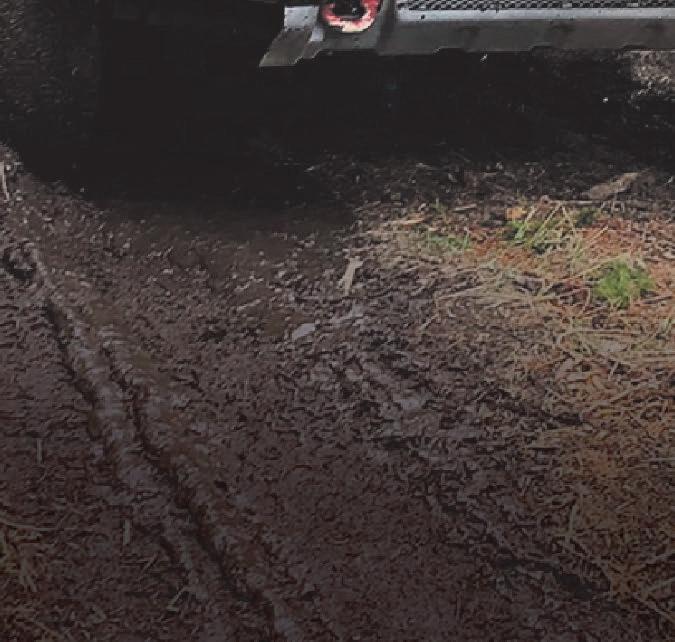


















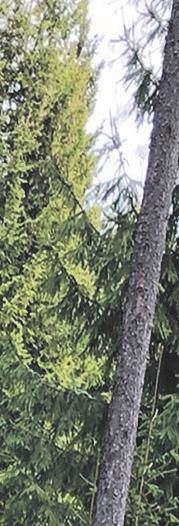










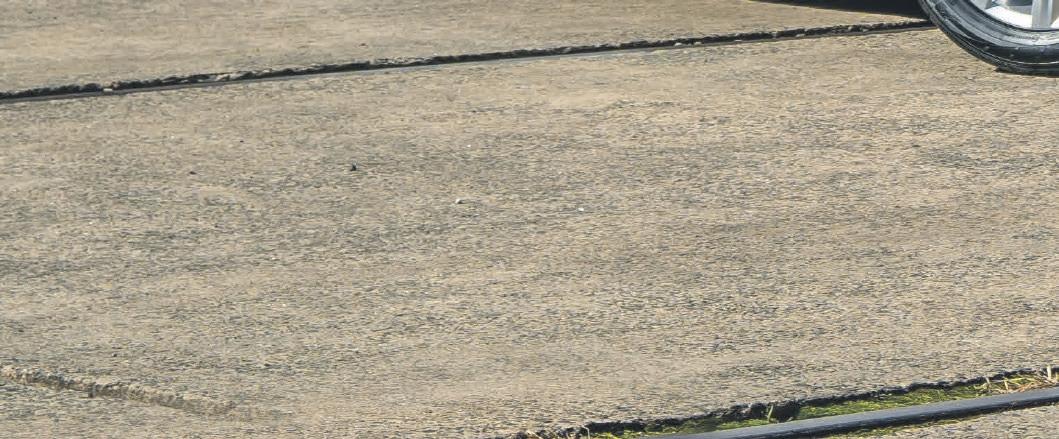
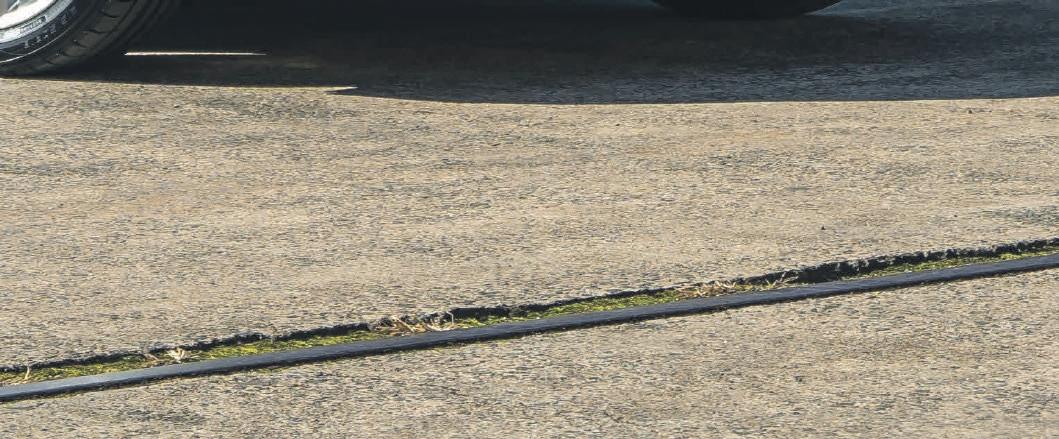




El Niño and a positive Indian Ocean Dipole could combine forces to cause abnormally warm and dry weather over large areas of Australia this winter.
Maximum temperatures are expected to be higher than average over most of Australia this winter, particularly during the second half of the season if El Niño and a positive Indian Ocean Dipole become entrenched.
ACharlesSturt University postdoctoral researcher has developed apps to put historical and recent climate data and analysis at the touch of a button for farmers.
The Combined Location Online Weather Data (CLOWD) apps for both computer and mobile phones enable growers to analyse recent and historic weather for any location in Australia at the touch of a map.
It is part of a Food Agility CRC collaborative research project with Charles Sturt University, SunRice and AgriFutures Australia.
The data used by the apps is from publicly available sites such as the Queensland ‘long paddock’ historical climate data.
By contrast, minimum temperatures could be lower than average for some parts of Australia this winter, particularly over the central and southeast inland. These lower minimums increase the risk of frost.
Warm days and cold, frosty nights are typical during El Niño and positive IOD winters.
The Bureau of Meteorology said June to August maximum temperatures
were likely to very likely to be warmer than median (60 per cent to greater than 80 per cent chance) for almost all of Australia.
Above median June to August minimum temperatures are likely to very likely (60 per cent to greater than 80 per cent chance) for much of Australia, with below median minimum temperatures likely (60 to 80 per cent chance) for southern parts of the
Northern Territory and Queensland, as well as western NSW and eastern South Australia.
Winter rainfall is expected to be lower-than-average for most of Australia this winter.

BOM says for June to August, below median rainfall is likely to very likely (60 per cent to greater than 80 per cent chance) for almost all of Australia.
using rice phenology (growth stage) data and weather data.
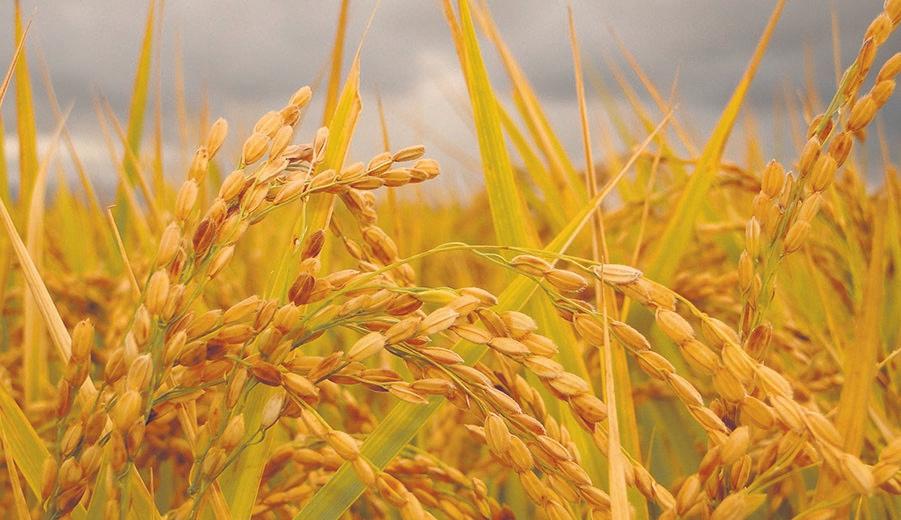
The researchers examined the Queensland Department of Environment and Science service called SILO (Scientific Information for Land Owners), a weather database for Australia dating back to 1889 which records temperature, rainfall, humidity and a range of other daily observations from weather stations around the country.
While some SILO weather data is interpolated (meaning it is derived mathematically from results of surrounding locations), interpolated data can still hold value for the farming community.
“Our goal for CLOWD is to provide farmers and growers with targeted weather analysis in a form they can use wherever they are,” researcher
Darren Yates“What we have done is make the data more accessible, and we’re working with industry partner SunRice to test it with farmers.
“There’s a wealth of historical weather data available but it’s difficult for farmers to access for their locations, as you often need to know the precise latitude and longitude for your farm.
“We developed a web-based app whereby a farmer can click on a map to bring up historical and recent data, but it also has data such as cumulative rainfall and growing degree days which are extra features that farmers can use to help make better crop and pasture management decisions.”
He said the idea for CLOWD came from a discussion with another Charles Sturt PhD student Allister Clarke who developed the machine-learning model that predicts rice/whole grain yield
“One parameter that SILO doesn’t provide is ‘growing degree-days’, which is like a heat-odometer for plants it’s a temperature-based mathematical calculation and that was the start of what became CLOWD,” Dr Yates said.
“But we also realised there was potential for CLOWD beyond rice, as GDD is calculated differently for different crops; rice is the default crop setting for CLOWD, but the user can custom-select from a range of crops, including barley, peanuts, wheat, cotton, fruits and more.”
Asmall northern Victorian gin distillery has proved it can mix it with the big guns, winning three awards at an international spirits show.
Black Rabbit Distillery’s signature gin received a gold medal award at the London Spirits Competition in April in only its first year of commercial production.
It also received a silver medal for its passionfruit gin and a bronze medal for
the Black Rabbit blackberry bramble gin.
In the competition, spirits were rated on three criteria: quality, value and packaging.
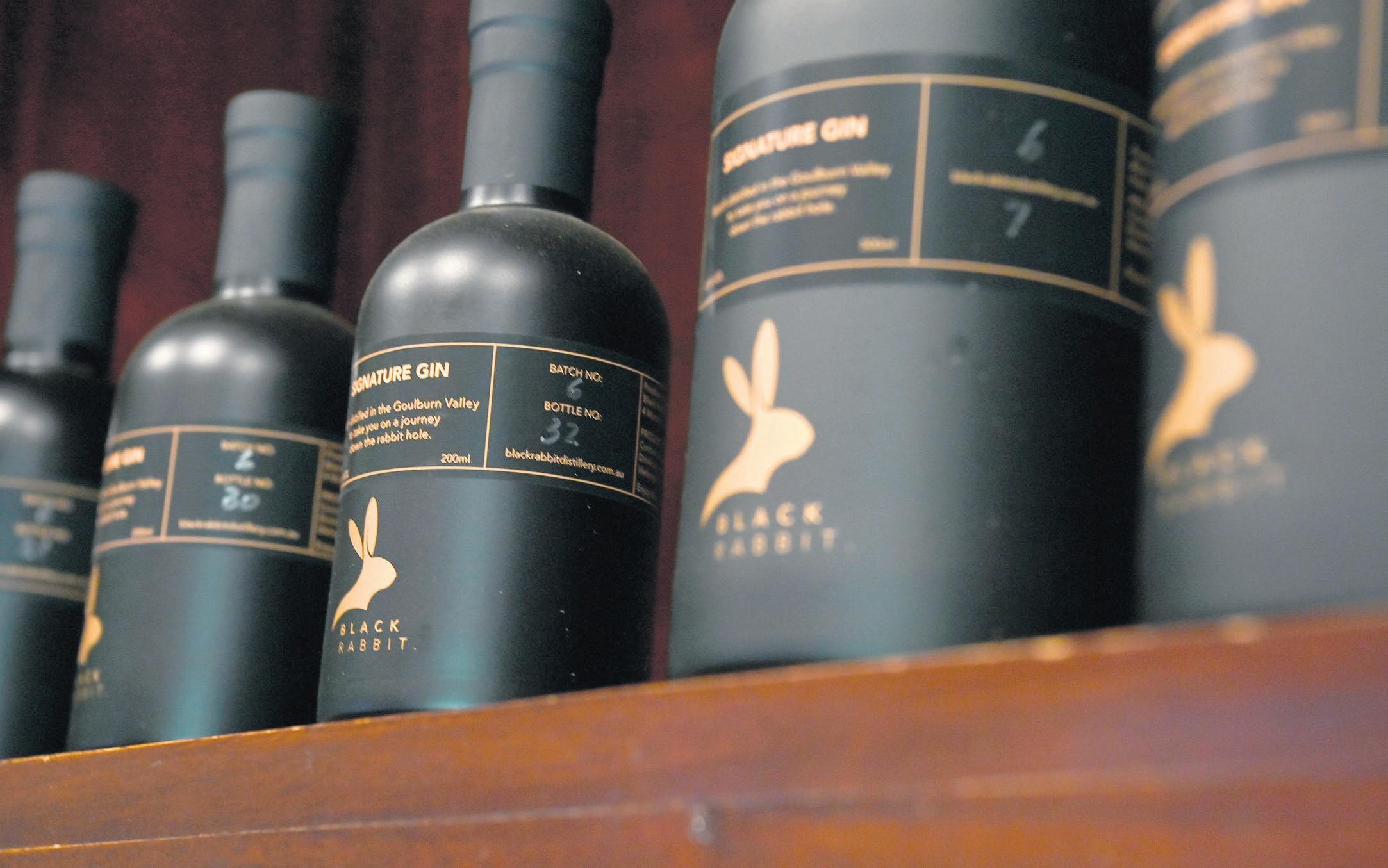
To be a medal winner, spirits must show a high rating in all three categories, with the most weight placed on the quality of the product. Unlike other competitions where entries compete against the same spirit, the London Spirits Competition
pitted gins against rums and whiskeys for the prizes.
Black Rabbit Distillery owner Sam Wieland was pleased with his distillery’s awards and said they showed the small business was on the right path.

“I was pleasantly surprised. We haven’t been operating a year yet,” Sam said.
“I’m a bit dumbfounded.
“The main reason is because it is such a new thing.
“You don’t expect to find yourself in this position (winning awards) that early on.”
Sam said the gold medal-winning signature gin scored 91 out of 100 overall in the competition.
However, the quality score was much higher: 95 out of 100.



The score on the packaging section of the competition was what let the product down.
“We’re more focused on what’s in the bottle than what it looks like,” Sam said.
He was more than happy with the 95 per cent quality score though, with the competition taking in things such as taste, aroma and the way the drink feels in the mouth.
“That comes down to how we make it,” Sam said.
He said the Black Rabbit gin was
made quite differently to a lot of other gins.
Black Rabbit gin is made with a plum eau de vie, which Sam said was taken to a point where the flavour was less of a plum flavour than if they were making a plum spirit.
The botanical maceration process is also different to a lot of gin making.
Sam said the process the distillery used made the Black Rabbit gins “more approachable” to those who may not have enjoyed gins before.
Winning awards with the three gins sent to London is a top effort for the small distillery, which has produced fewer than 2000 bottles so far.
“This is validation we are on the right track,” Sam said.
Running the business with his wife, Fiona Wieland, Sam said he had been involved with distilling for 20 years.
He also describes himself as a “tinkerer” and as such has built most of the equipment for the distillery himself.
While the distillery started off small, Sam is testing new stills that would allow the business to bottle a much greater number of gins in each batch made.
At the moment, Black Rabbit Distillery sells to some local bottleshops, a couple of restaurants and from its distillery door at 4 Murat Nook in Kialla.




















Herbicide-resistant annual ryegrass and wild oats are proving a challenge for many croppers in north-east Victoria, however those following the industry mantra to mix and rotate herbicides are winning the battle.

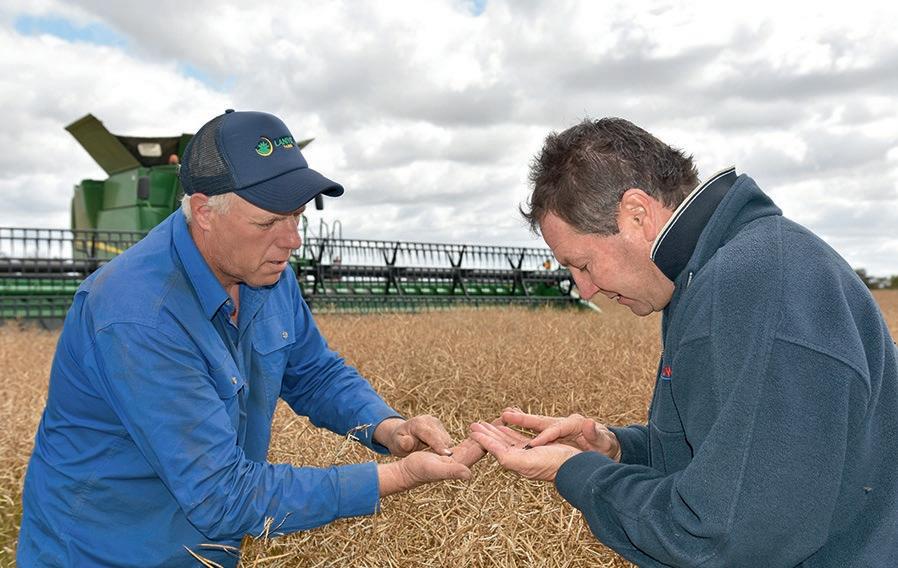
Of course, the strategy is helped when effective new herbicides are introduced, which recently occurred for controlling the grasses in the canola phase of cropping programs.
James Murray, agronomist with IK Caldwell at Cobram, said rye-grass was particularly resistant to glyphosate and had been a major problem, while some wild oat populations were resistant to FOP herbicides.
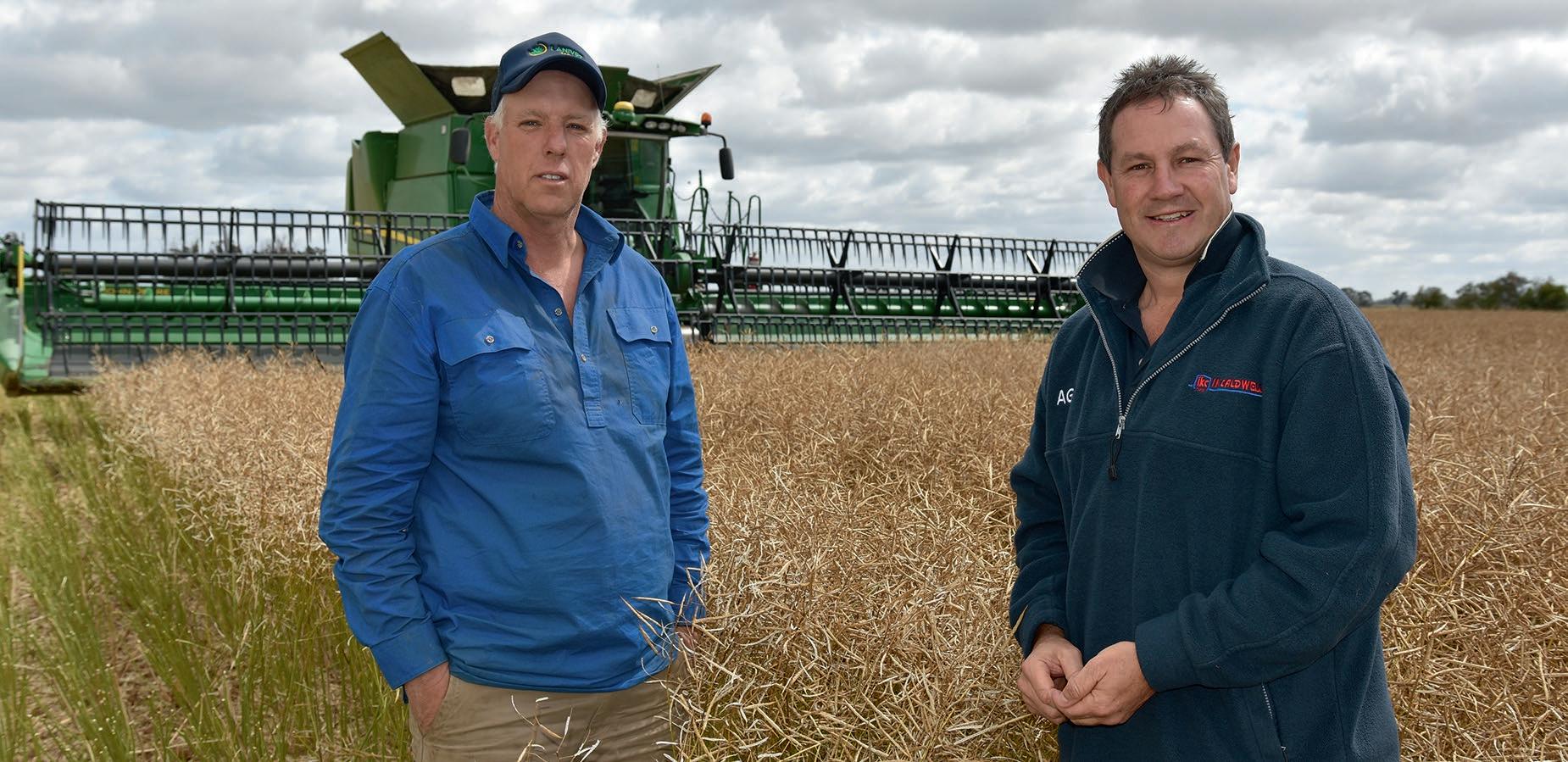
He said growers traditionally applied trifluralin and triallate against rye-grass and wild oats in canola and more recently used mixes like propyzamide and trifluralin, however Tenet® herbicide was now providing a new option with strong benefits.
Containing the active ingredient, metazachlor, Tenet is the only Group 15 herbicide that can be applied preemergent or post-emergent in canola.
Developed by ADAMA Australia, it has the broadest weed control spectrum, providing residual control or suppression of more than 20 annual grass and broadleaf weeds, also including barley grass, brome grass and capeweed.
James said Tenet washed-off stubbles well and compared with propyzamide, it was far more mobile and highly soluble, which was important considering autumn rains could be limiting through the region.
“That’s what gives it the edge. There’s a lot to like about it. It can be used IBS (incorporated by sowing), but it also has

the flexibility that if you haven’t used it upfront and you have some weed escapes, it can be used as an early postemergent treatment.”
“As long as it is tank-mixed with something IBS, it provides high level control of annual rye-grass and is quite superior on wild oats. It also has been very good on hogweed, milk thistle and wet weeds, particularly toad rush.
“Usually, we will get third and fourth germinations of rye-grass and Tenet has been important in reducing numbers leading into the next wheat crop.”
Katamatite grower Jarrod Lukies said herbicide-resistant annual ryegrass and wild oats were becoming more prevalent on the family’s ‘Lanivet Farms’ property and they were strongly targeting them during the canola phase of their cropping program.
The Lukies grow conventional and herbicide-tolerant canola varieties, including for seed production, and they are included in continuous rotations with wheat and barley winter crops, as well as with summer crops of corn.
Jarrod said previously for their canola, they applied trifluralin and triallate pre-emergent herbicides, followed by an in-crop treatment with clethodim and then application of glyphosate later in the season to help prevent grass seedset.
Last year, there was also a shortage of propyzamide and this prompted a re-think for their pre-emergent applications.
They took advantage of an opportunity to “double knock” with paraquat, followed by a pre-emergent application of trifluralin and triallate herbicides, and then added the Tenet herbicide to postemergent applications of clethodim.
“We noticed quite a few escapes
post-emergent, so we went with 750 millilitres/hectare of Tenet with the clethodim and we found that it did a really good job of cleaning up those small, in-furrow grasses. It was really quite good and we will adopt it as practice,” Jarrod said.
“We are getting some clethodim resistance, so with Tenet, it will clean up the escapes that the clethodim is not getting.
“It also stopped a lot of the wet weeds that otherwise would not have been controlled and the results spoke for themselves — the paddocks were quite clean after the applications.
“Tenet is a new tool and hopefully it will also add to the longevity of some existing chemicals we use.”
He said they liked the fact it could be applied pre-emergent or post-emergent and it mixed and carried well with other herbicides.
The Lukies applied Tenet via their Patriot sprayer, which features a pulse width modulation spraying system. They
generally aim for a medium droplet spectrum.
“It was stable and good to handle in the mix, and there were no effects on the crop,” Jarrod said.
He expected Tenet would become “a key tool in the toolbox” for their cropping program, whether applied preemergent or post-emergent, to help limit weed resistance and also extend the use of other herbicides.
“We will do paddock plans and look to address those issues and apply what is best for our cropping system.”



James said the industry would be careful to ensure correct stewardship with the new herbicide.
“We want to preserve Group 15s for as long as we can. We want to ensure we don’t break the product,” he said.
“Tenet is a product to use strategically. If we have got high (grass weed) numbers, we need to be doing everything we can to reduce those numbers.”
Katamatite grower Jarrod Lukies and James Murray, agronomist with IK Caldwell at Cobram, sampling canola quality prior to last harvest on the Lukies’ ‘Lanivet Farms’ property.
Farmland property values reached a record high in the Goulburn Valley region last year, but fewer farmers were wanting to sell.

The improved dairy farm gate prices means that more farmers are holding onto their businesses, rather than selling.
A new report noted a 35 per cent reduction in the volume of property transactions in 2022.
Darren Scott from Gagliardi Scott said that when commodities experienced an up-swing, farmers were more reluctant to sell.
“I was talking to a dairy farmer the other day and asked if he was interested in selling. He just wanted to hold on because he now had a chance of making real money,” Mr Scott said.
He said there were also fewer dairy farms in the north, as corporate investment businesses bought up and aggregated the properties into alternative commodities.
According to the Australian Farmland Values report commissioned by the Rural Bank (a division of Bendigo and Adelaide Bank), the median price per hectare in the Goulburn region recorded strong growth of 22.2 per cent in 2022.

This pushed the median price to a record high of $12,097/ha. This was a moderate slow down from growth of 33.7 per cent in 2021.
The region’s median price has experienced nine consecutive years of growth with a total rise of 154 per cent in that time.
After two years of rises in transaction volume, the region saw a 35.5 per cent decline in 2022. At 214 transactions, this was the lowest transaction volume on record for the region and 37 per cent below the 10-year average.
Kevin Hicks Real Estate principal Kevin Hicks said his business was selling irrigation country for $4500 to $6000 an acre, plus improvements and water shares.
He acknowledged that dairy sales had slowed, with improved farm gate milk prices, but believed that could change as price signals on overseas products indicated a slow down.

Another challenge for dairy, particularly larger operations, was finding labour.
Dairy farms in the northern Victorian region were selling for between $7000 to $7500/acre, plus water share.
He expects good dairy farms will hold their value.
Mr Hicks has detected more caution in the market as interest rate rises begin to make an impact.

Most farm categories were moving, except for horticulture.
The 2023 Rural Bank Australian Farmland Values Report, supplemented by farmland sales data from Digital Agriculture Services, recorded a national 20 per cent rise in growth for 2022, keeping pace with growth in 2021.
It is the first time in the past 28 years that growth of more than 15 per cent was recorded across all states and territories.
Rural Bank head of agribusiness development Andrew Smith said this was the ninth consecutive year the national median price per hectare of Australian farmland had increased, lifting the 20-year compound annual growth rate to 8.5 per cent and with the national median price rising by 167 per cent at a CAGR of 11.5 per cent over those nine years.
“Farmland values maintained strong growth momentum in 2022 as the
national median price per hectare increased by 20 per cent to $8506 per hectare,” Mr Smith said.

“The key drivers of farmland values are set to remain in favour of demand exceeding supply through 2023, driving a 10th consecutive year of growth in the national median price per hectare.
“While growth in farmland values is still expected in 2023, this will likely be at a slower rate than the previous two years.
“Farmland transactions in 2022 equated to a total of 8.8 million hectares of land traded at a combined value of $11.7 billion.”
F.P. Nevins was established in 1923 and has been a family owned and operated business. With two office locations at Inglewood and Rochester and local agents with a wealth of knowledge.
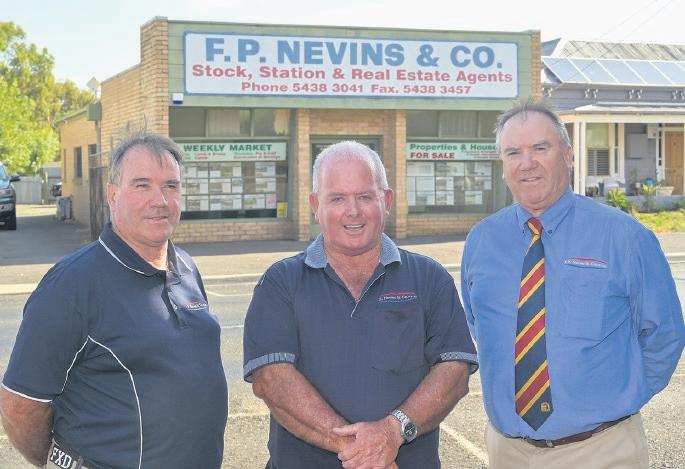

At F.P. Nevins, we are regarded as one of the quickest payers of clients within the industry, payments being made every Wednesday/Friday by cheque or electronic transfer.
We are career professionals and experts in our field. We travel anywhere to facilitate our clients’ requirements and are continually trying to improve with development programs and seminars being run through the organization ALPA.
Selling and buying real estate or livestock, as well as managing clearing sales can be daunting and choosing the right agent can be hard.
• The sale of Real Estate whether by auction or private contract
• Clearing sales: from household chattels to rare and antique machinery/equipment
• Onsite auctions
• Online auctions with AuctionsPlus

• Marketing and sales of livestock, primarily lamb, beef, and pork
• “Over the hooks” trading
• We also facilitate in the purchase/payment of livestock, securing product from all over the country
SALES ARE HELD:
• Weekly on Monday at Bendigo for sheep
• Echuca prime sale held fortnightly on Wednesday 8am
• Echuca store sale held on the first Monday of the month at 10am
THIS IS WHAT WE KNOW, THIS IS WHAT WE DO!
& Co.
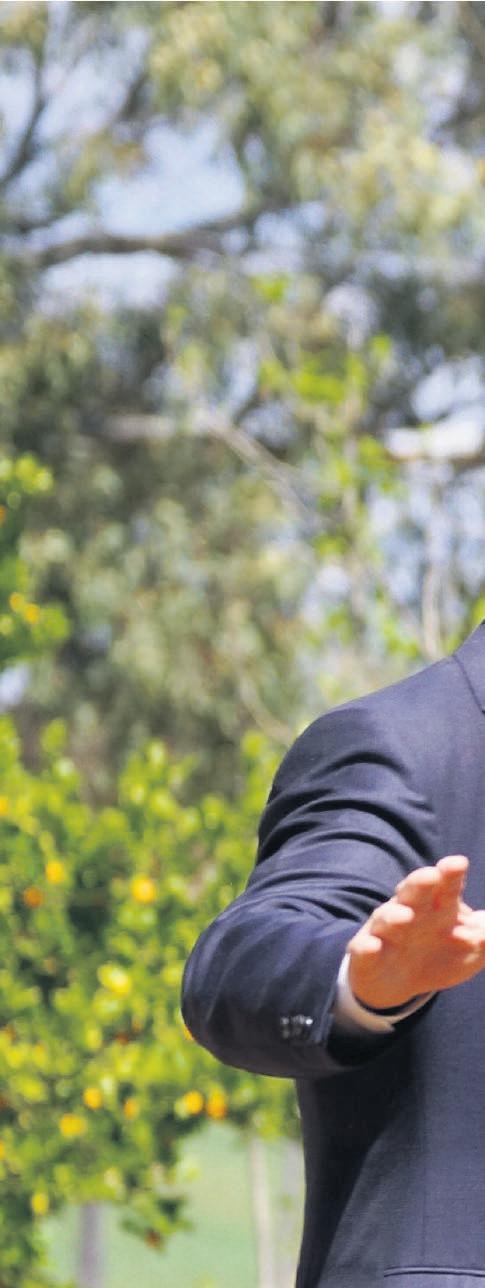

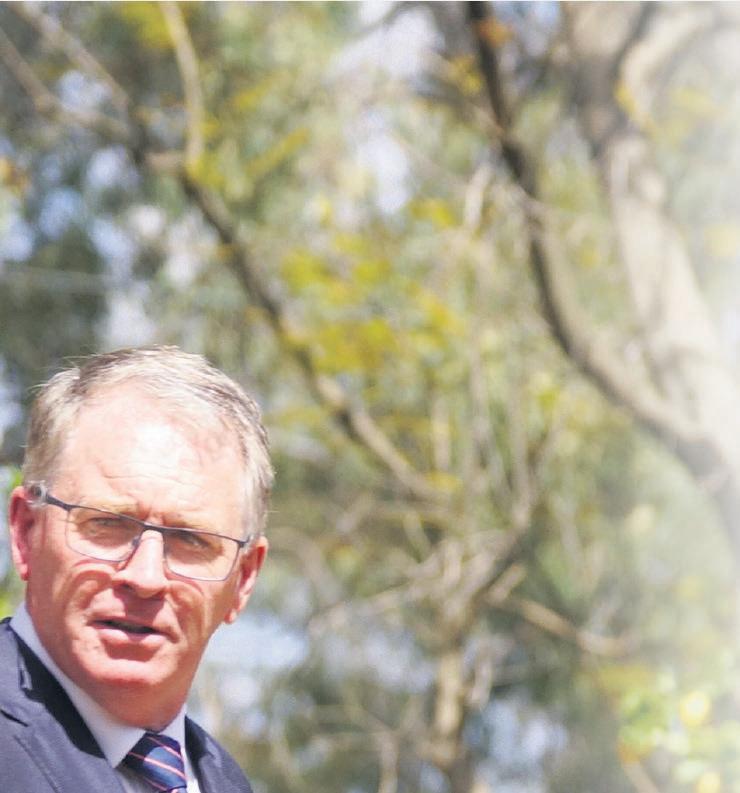



The sale of your property, the family farm, in many cases is a once in a life time decision. We take pride in our work and accept the responsibility required to get the best outcome for you. Make the right decision, talk to us.
“Our heartfelt thanks and gratitude must go to Kevin and his very capable team that were involved in the complete sale process. We would highly recommend to anyone who is looking for a professional and personal vendor experience”
Thanks again Kev!
Chris BurkeOur Clearing Sale team managed by Chelsea McKay is passionate and take pride in what they do, with the attention to detail required to give successful outcomes.

The modern selling method of Clearing Sales today requires experience and highly skilled people.
Our committed team has the expertise to process online selling with exceptional outcomes for our vendors.
“I am pleasantly surprised of how well machinery sells online. There is so much more work required to present a Clearing Sale today and our professional team is more than capable” .
When it comes to rural property in the Goulburn and Murray Valleys, the team at Gagliardi Scott Real Estate has the local knowledge and decades of experience in selling land and, with improved seasonal conditions, the rural sector is thriving with excellent growing conditions.
There is a need to underpin the nation’s food security and local rural real estate experts Gagliardi Scott believe northern Victoria has a crucial role to play.
Director Darren Scott said tens of millions of dollars’ worth of agricultural land had changed hands in the area since the beginning of 2020, and a couple of outstanding autumn breaks are only adding to a positive outlook.


“People are finally starting to look at how important this area is for food production,” Mr Scott said.
“The weather conditions have been great – it’s really changing people’s mindsets. When farmers make money, we all make money because they’re the ones that go into town and spend.”
Mr Scott said he and his team had always been positive about the future of agriculture in the area, which has been proven with high land prices, and now it was time to demonstrate to the rest of the country what the land can produce.
“This land can grow huge amounts of dry matter per megalitre of water, and that translates into amazing amounts of food.” Recent sales have been to a 50/50 mix of corporate entities and traditional family farmers, with cropping land, horticulture properties and dairy farms changing hands.
Cropping land continues to be sought after, especially tightly held dry land farms, which don’t have the burden of water entitlement delivery share, and at the opposite end of the spectrum farms with the security of groundwater are always of interest.
In good news for the local dairy industry, Mr Scott said dairy farms are hard to get for sale because of good milk prices and continue to operate producing the quality milk that the region is renowned for.“With milk, grain, beef, lamb and vegetables prices all soaring, it’s as positive as we have ever seen it.”
A great opportunity exists for the freehold purchase of Pinewood which for many years has been a strong family held property in the Kaarimba cropping area and has produced high-quality crops year after year.

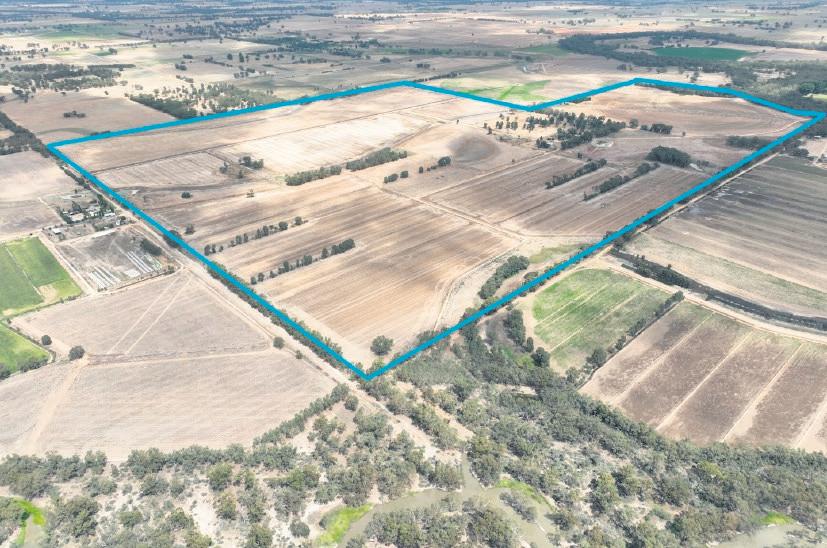
The attention to detail in setting up this property will not go unnoticed with a lateral pivot covering 38 ha and a centre pivot covering 29 ha and the balance in pipes and risers and some dry land areas. Finishing off lambs after the cropping season has been a staple at this farm and it comes complete with fully functional 3 stand shearing shed and yards. With three Road frontages and 2 Goulburn Murray water outlets pumping directly from the broken Creek it is a very low labour unit property to run. With 3.35 delivery share attached, water access and availability is not a problem. Excellent soil types and an excellent fertiliser history with all records currently available. Previously producing canola, wheat, pasture hay and sheep and Only 20 minutes from Shepparton This property presents a great opportunity for someone looking for a turn-key operation to background their current agribusiness enterprise.
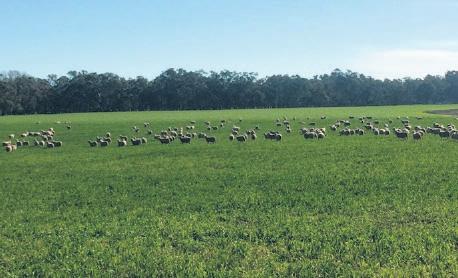
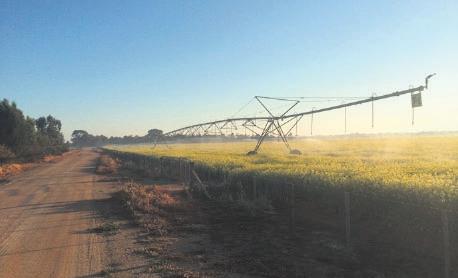
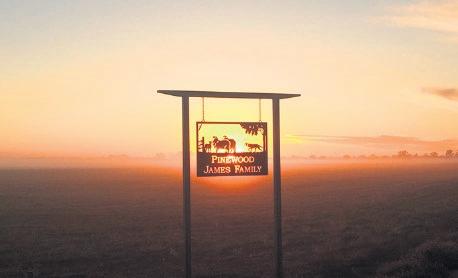
A neat and tidy home that presents 3 spacious bedrooms all with built-in ropes, plus a study. All in one kitchen/dining area leading into a large family room. Kitchen is fully equipped with electric oven, cooktop, dishwasher, rangehood and island bench.
Heating and cooling is covered with 3 split systems air cons, wood fire heater and ceiling fans throughout. Easy maintenance garden, 6x6 meter double garage and a large workshop/machinery shed with plenty of yard space.
The Nvl team has a wide range of experience across Livestock, Real Estate & Clearing Sales. We are established agents in the Echuca and Shepparton Saleyards and pen cattle for Auction at Both Store & Prime Sales and special sales. Our agents have a vast experience in marketing and auctioning items from household items, rare/antique items and machinery/equipment. In Online or onsite manner depending on what best complements each vendor. Being a privately owned company it allows us to work with our clients with a more personal approach, whether that be a as vendor or buyer.

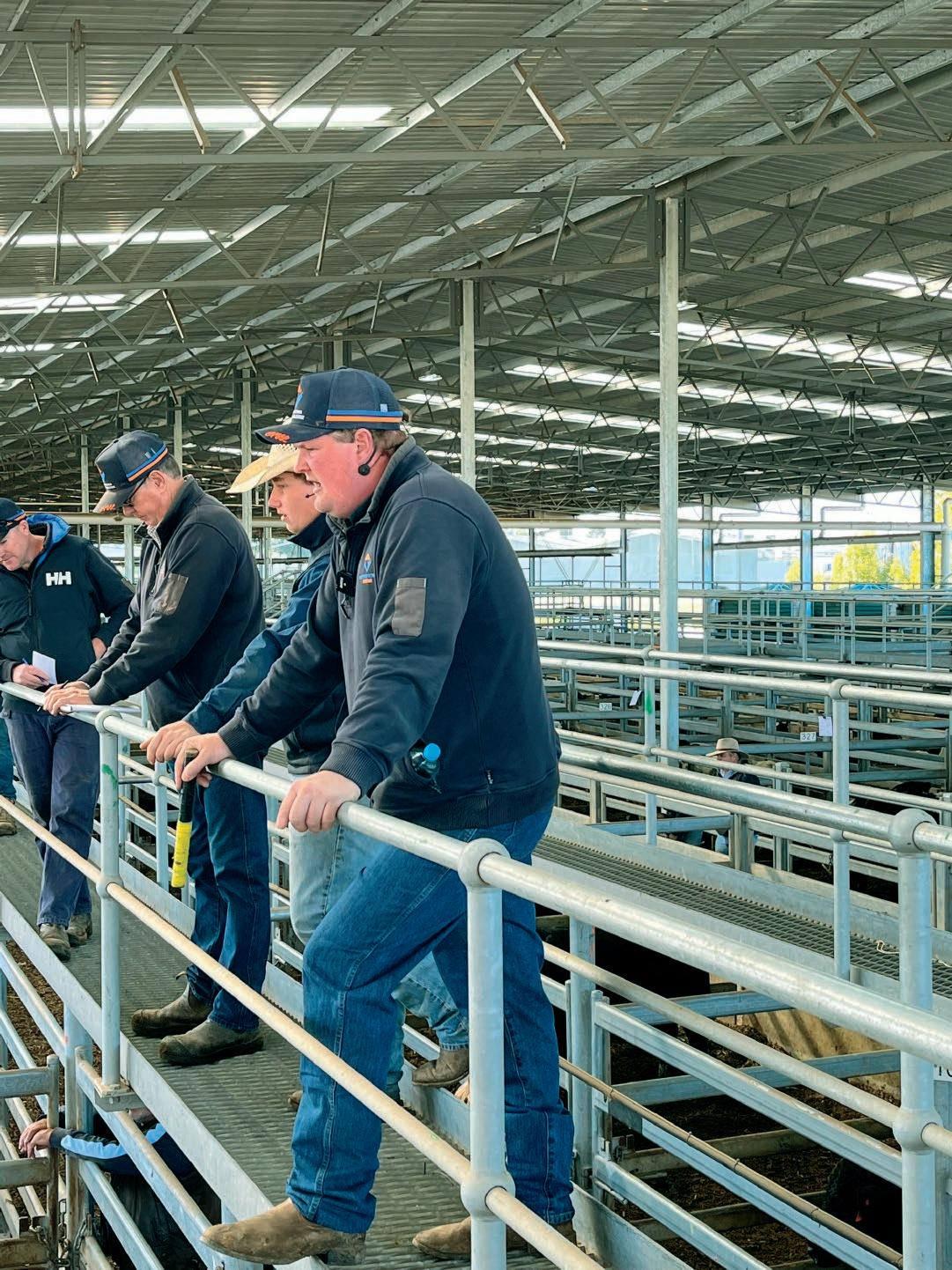


The Nvl team has a wide range of experience across Livestock, Real Estate Sales. We are established agents in the Echuca and Shepparton Saleyards cattle for Auction at Both Store & Prime Sales and special sales. Our agents vast experience in marketing and auctioning items from household rare/antique items and machinery/equipment. In Online or onsite manner on what best complements each vendor. Being a privately owned company it allows us to work with our clients personal approach, whether that be a as vendor or buyer.
Jayden Ferrari: 0400295867
Neil Maddison: 0427505053
Will Lockhart:0458037787
Damien Kennedy: 0427735400
Travis Thompson: 0427990779
Mick Kay: 0407688186
Jayden Ferrari: 0400295867
Andrew Colvin: 0428824679
Craig Cox: 0400106949
Kat McLeod: 0418758905
Neil Maddison: 0427505053
Phil Serra: 0400572901
Travis Thompson: 0427990779
John Moyle: 0428588335
Morgan Spencer: 0427503756
Will Lockhart:0458037787
Damien Kennedy: 0427735400
Office: Raelene ODonoghue & Bec Dicker
Kat McLeod: 0418758905
Morgan Spencer: 0427503756
Mick Kay: 0407688186
Neil Maddison: 0427505053
Andrew Colvin: 0428824679
Bec Dicker: 0455144775
Phil Serra: 0400572901
office@northvic.com.au - www.northvic.com.au
Real John Moyle: Neil Maddison: Bec Dicker: 0455144775 Office: Raelene ODonoghue & Bec Dicker
(03)54823845
Northern Victoria Livestock & Real Estate
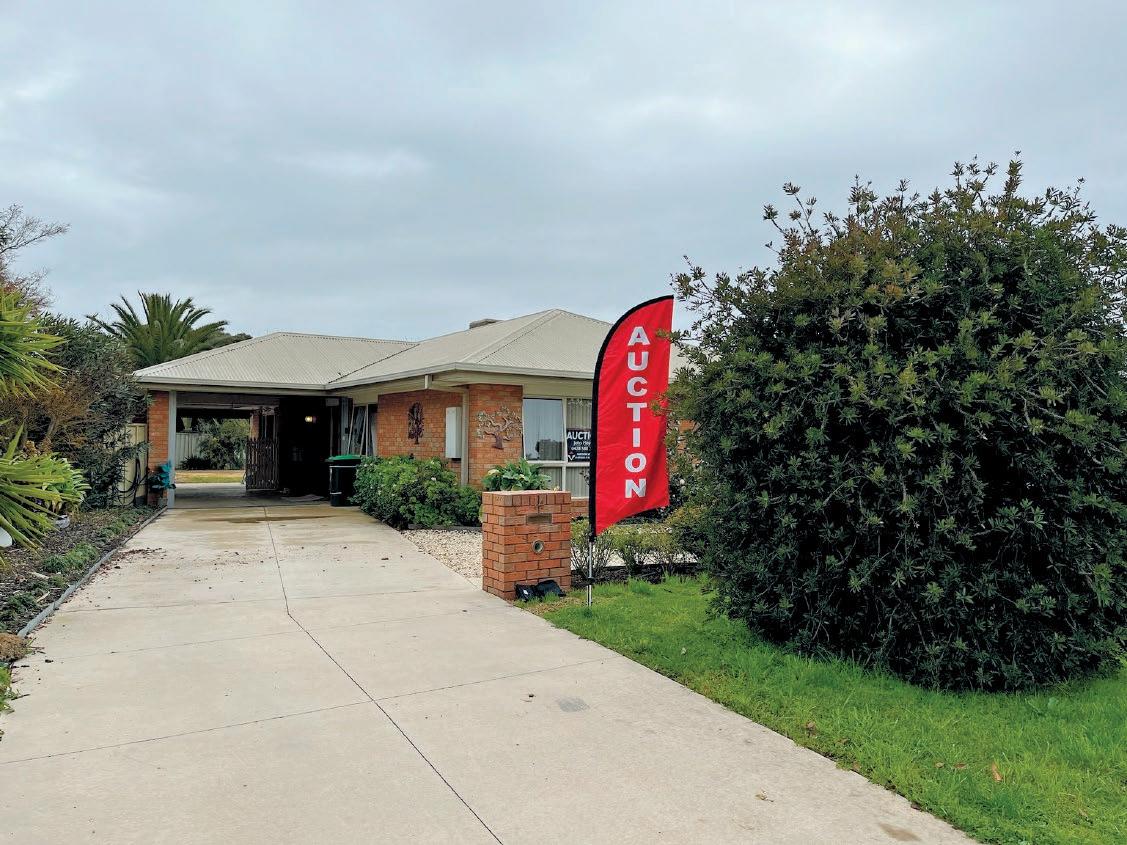



office@northvic.com.au - www.northvic.com.au

Australia’s Veterinary Medicines Authority has registered the world’s first oral product for managing lice in sheep
Lice is estimated to cost the Australian sheep industry about $123 million and now, for the first time ever, farmers are not bound to shearing time to effectively treat their flock.
Flexolt, a first-of-its-kind oral lice treatment for sheep, giving Australian Sheep farmers ultimate flexibility when it comes to treating their flock has been registered for use in Australia.
The world-first product can be used on both sheep and lambs, with any length of wool, revolutionising how farmers can administer a sheep lice product.
Current lice treatment products are applied externally after shearing however, with Flexolt, a new method of administration is available a single oral dose giving farmers greater choice.
Flexolt means farmers can strategically treat their flock for lice at any time such as pre-lambing, when lambs are at foot or when new stock is brought onto the farm.
Coopers technical lead and veterinarian Jane Morrison said the breakthrough product would transform on-farm practices for Australian sheep and wool producers.
“Flexolt works systemically, from the inside out, therefore lice control is not affected by length of wool. In practice, this means that farmers can treat off-shears, short and long wool
sheep, and lambs with one oral dose,” Jane said.
“It means farmers are no longer bound to shearing time for effective lice control, allowing sheep producers to choose any timepoint right across their farming calendar that best suits their operation.”
WoolProducers Australia chief executive officer Jo Hall said the product would be a game changer for Australia’s $3.5 billion sheep industry.
“Lice is a significant production and animal health issue for the Australian wool industry, one that’s estimated to cost the Australian sheep industry around $123 million per year through disease control and production losses,” Jo said.
“Shearing is a very busy time, particularly when you add the critical
animal health management treatments of lice control.
“Allowing farmers to treat for lice, when they want, has real benefits in terms of managing labour, optimising on-farm performance.
“Every sheep flock could have a lice outbreak at some point, but by giving farmers more control over the way they manage this issue with the addition of a new tool, this will help make on-farm processes more efficient and increase the health of their flock.
“WoolProducers Australia is extremely supportive of the innovative product released by Coopers and MSD Animal Health, its importance to the industry cannot be understated,” she said.

The uptake of genomic technology among the commercial beef industry is on the rise as producers understand the power of taking their breeding decisions to the next level.
Neogen Australasia NSW genomics territory manager Hannah Powe said use of genotyping had exceeded expectations with 79 per cent of Angus bulls listed in catalogues in 2022 carrying genomic predictions, while 29 per cent of active breeding females and 83 per cent of 2021 born calves had genotyped sires.

“It is growing as more producers want to know more about the animals they are working with,” Hannah said.
“People are using genomic technology as they want to make better breeding decisions, to access more information about their stock earlier in life for traits such as milk, structure and intramuscular fat, improve the accuracies of estimated breeding values
and increase the accuracy of hard to measure traits.
“Aligned with this we are continuing to encourage people to test at birth, marking or weaning allowing them to make earlier decisions.”
Hannah was a guest speaker at a seminar organised for commercial and seedstock producers by Angus NSW in Wagga Wagga earlier this year.
Angus NSW chairman Matt Macri said the state group was committed to connecting and engaging NSW members with current industry relevant knowledge improving on-farm operations and the Angus breed.
“Information and technology are rapidly improving our on-farm activities. Angus NSW is committed to bringing the latest information including genetic selection tools and research for beef cattle producers, with the objective of breeding superior cows to retain within the herd,” Matt said.
Hannah said producers were using
genomic testing for quality assurance and performance guarantees when marketing stock.





“Producers should continue to performance record as they continue to build their genetic reference population.”
Neogen Australasia provides a genomic selection tool, Angus GS, saturated with Angus specific content, and the highest density, breed specific profile product on the market.
There is also genomic testing for parentage, genetic conditions and Pestivirus.
Hannah said commercial herds were now trialling Angus HeiferSELECT for their replacement heifers to identify their culls and keeps for their autumn joining.
Angus HeiferSELECT is a genomic tool to help inform the selection of Angus replacement females (87.5 per cent Angus content or greater) in a commercial beef breeding operation.
Angus HeiferSELECT provides genetic predictions for 13 maternal,













In a time where input costs are a high, feed out your hay in the most ef cient way possible, with a Bale-Up Hayfeeder. Employing locals, all our feeders are made in Australia, using Aussie steel, we are sure to have a feeder to suit your requirement. Log onto our website or give us a call. Save hay the Bale-Up way.

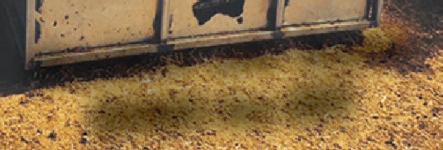
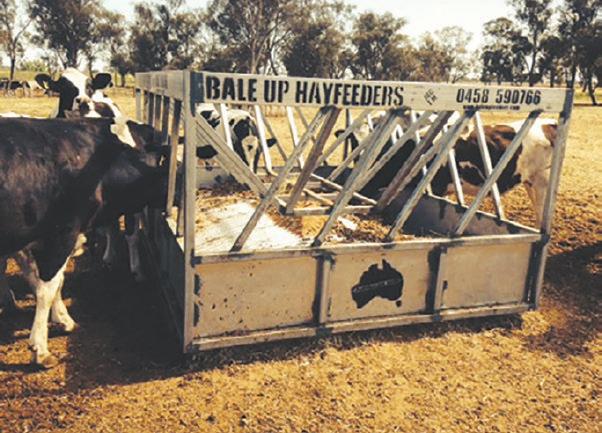

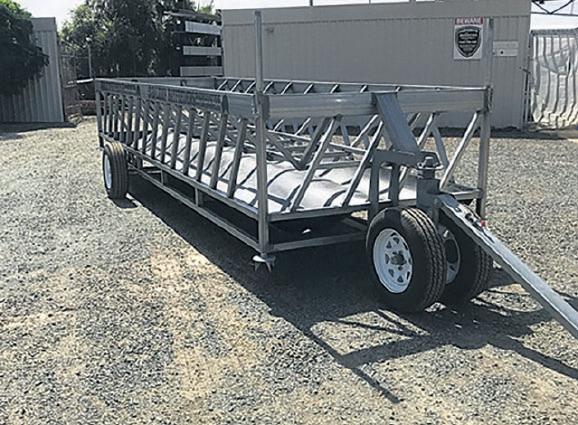
growth, feed intake, carcase and resilience traits. It also provides the genetic predication for cow-calf value, feedlot-carcase value and total breeding value, and incorporates Angus BreedCHECK, a genomic breed composition prediction.

“It compliments other forms of on-farm selection of age, weight, phenotype, this is another tool to add to the box for understanding what’s happening in terms of genetics and genetic potential your stock could be offering,” Hannah said.
According to Angus Australia, as of July 2022, there were 22,557 heifers tested with Angus HeiferSELECT in 65 herds across the nation.
“Producers are looking at using genomic technology at both stud and commercial sector to distinguish themselves and take their breeding decisions to the next level,” Hannah said.
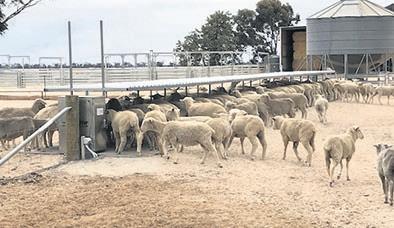
“They are looking to make informed evidence-based decisions about knowing where they sit, to improve on-farm efficiency. From genomic testing they can identify their base line, understand their herd and make adjustments to meet their breeding objectives and know what they are working with to move forward.
“They can also understand the influence bulls are having within a herd
and heading into bull buying season the information can be used to identify priorities for the next bull purchase decision.
“On top of that it allows you to genetically identify superior or elite animals for use in AI programs or take it to the next level as a marketing option.”
In contrast, genomics allows the identification and culling of inferior stock in a program.

The next genomic step for Neogen is sequencing with 2.2 million SNPs (single nucleotide polymorphisms) to identify more commercially relevant traits.
“We will continue to work with Angus Australia as part of their Angus Sire Benchmarking program and are having conversations with producers about testing mature females having an influence on their herd so their investment will be forwarded through into the future,” Hannah said.
turning
• Full length chassis supporting trough and hopper 12mt Unit $19,800.00 Inc GST
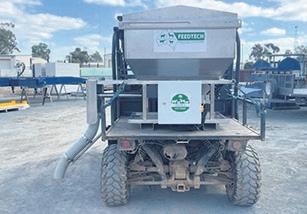


Mobile Trough Auto Feeders
• Sizes available 6mt & 12mt Trough lengths
• 12mt Unit has 24mt Trough Space
• Fully towable
• Adjustable PVC Heights
• Regulate how much feed is fed out via the Auto Timer
• Auto On/Off with 24hr Timer or Manual operation
• Easy hook up to field bin
• Solid Galvanised construction
• Solar powered running 24V Motor & Gearbox
• Bluetooth connectivity for Solar & Battery Status
• Wire retainers to run wires full length of trough

• 1.4mt wide low profile roof
• Adjustable axles for tight turning
• Full length chassis 12mt Unit $18,110.00 Inc GST
Feedtech Precise Horse Feeder save labour and feed out precise amount without leaving your seat.


Features
• Solid & Robust Design
• In paddock feeding
• 2x 200lt Hoppers
• Easy Filling with slide and tilt roof
• Feedtech PLC Controlled for ease of operating and precise feed amounts

• Keyfob start with Auto stop after the exact amount is dispensed
• 1x Heavy Duty 12V Motors and Italian gearboxes
• 1x 120Ah Batteries
• Comes with battery charger
• Has the ability to feed from LHS or RHS
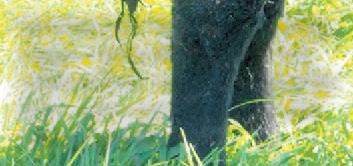






ACharlesSturt University researcher has developed a mobile phone app that provides information about NSW river levels in a 50 kilometre radius from the user.

RiversNearMe is a free, web-based app for phones that provides river level data sourced from WaterNSW for up to 50 km in any direction from your NSW location by tapping on a map.
It was developed by Darren Yates, a postdoctoral research scientist in the








Charles Sturt School of Computing, Mathematics and Engineering and in the Charles Sturt Gulbali Institute of Agriculture, Water and Environment.
“RiversNearMe is a quick and easy way for anyone to monitor recent river levels and river flow rates for up to 50 km in any direction of a desired location within NSW,” Dr Yates said.
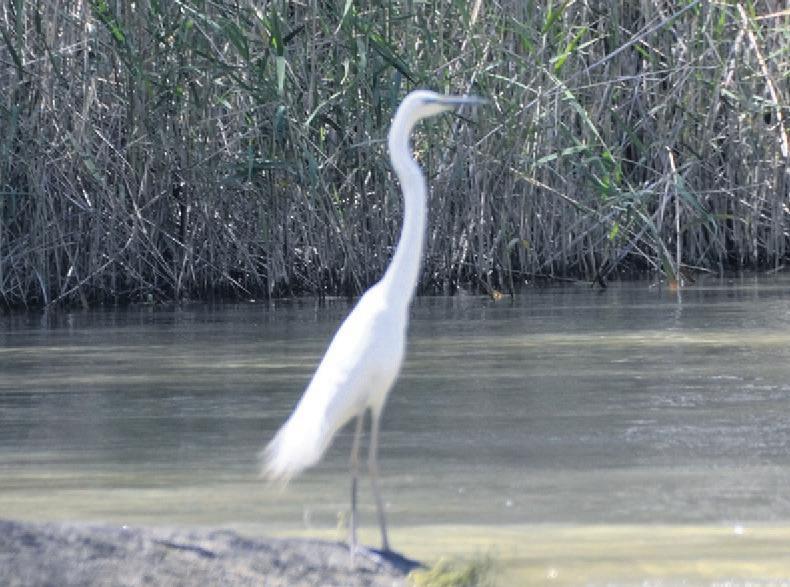
“Just point your phone web browser to riversnearme.csu.edu.au, click on a map location in NSW and RiversNearMe does the rest.”
Dr Yates said users could view trends over the past seven hours or seven days, as well as record peaks at any station site location, and even store their favourite location so they don’t have to click anything.
“Our data comes in near-real-time from the statewide telemetry stations of WaterNSW, who we thank for making the data available,” he said.
While primarily designed for farmers, the RiversNearMe app is available to anyone who has an interest in

rivers — including campers, fishers, canoers and kayakers.
RiversNearMe is also part of a Food Agility CRC collaborative research project with Charles Sturt University, SunRice and AgriFutures Australia.





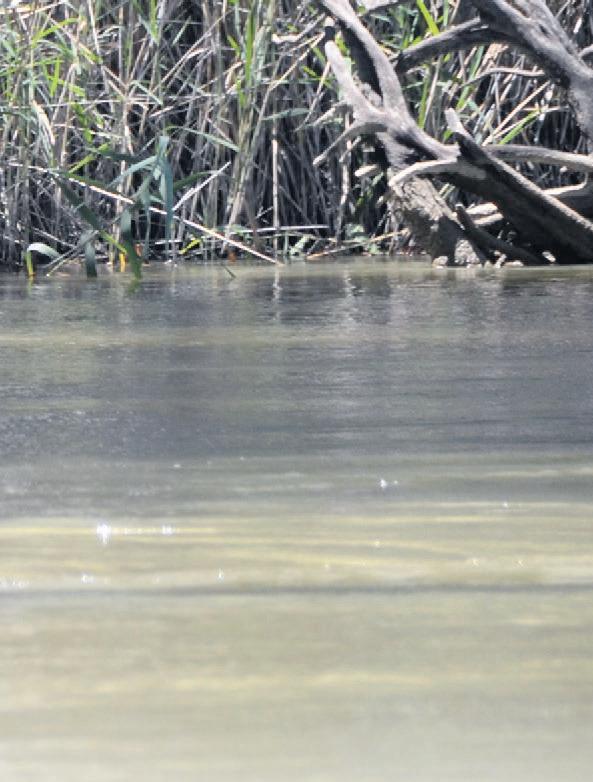
It follows the recently released Combined Location Online Weather Data (CLOWD) apps for computer and mobile phones to enable farmers and growers to analyse recent and historic weather for any location in Australia at the touch of a map.





Our Irrigation technology solutions deliver total irrigation control through automation, monitoring and real time analysis.


WiSA has been a leader in irrigation control and automation technology for over 25 years.

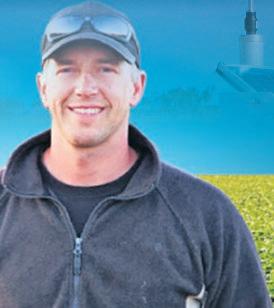



WiSA solutions integrate with existing irrigation infrastructure, removing the need to change your existing equipment.







Our systems are modular by design, allowing customers to add to the system over time.
WiSA technology is equally applicable to all farm types and irrigation methods, and is currently being used successfully across the world We partner with our customers to deliver sustainable irrigation practices and financial benefits.

Smart irrigation management that won’t upset the bank manager.








Accurate data is collected through a variety of probes and sensors, and accessed in real time through our Aqualink software for real time monitoring and analysis.



Entire irrigation and fertigation systems are managed from your computer, based on accurate information from your property.

Our solutions operate in manual, semi-auto or fully automatic modes, determined by the user.

Reduce energy and labour costs through automating water and fertilizer applications to plants in the correct amounts when they need it. Increasing plant health and production yield by maintaining optimal growing conditions.

“WiSA were not only the best price, their work was also cutting edge and the service and support were excellent. Whatever you do, make sure you contact WiSA for a quote. You’ll be glad you did.”
– Satisfied customer

































